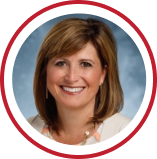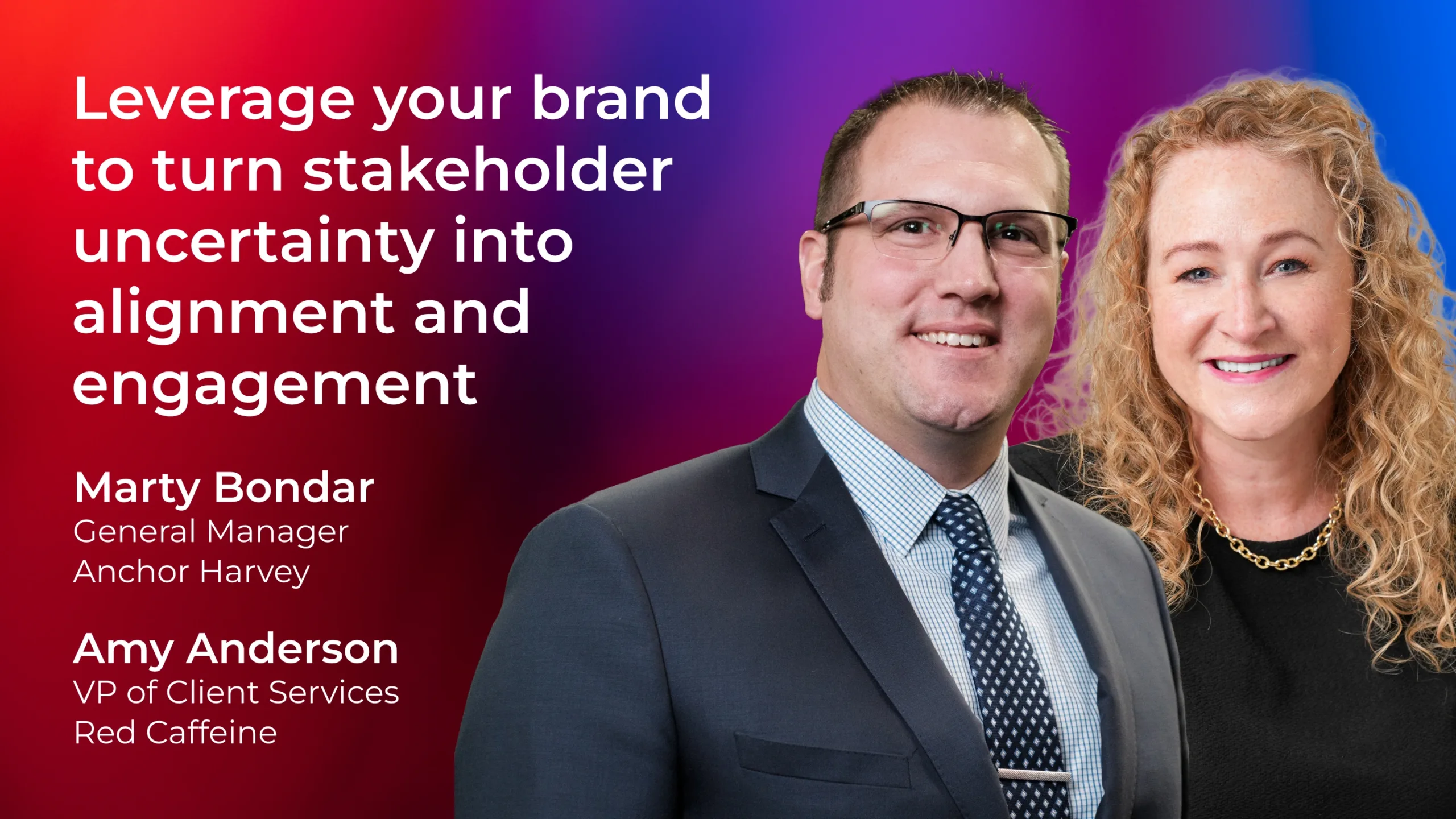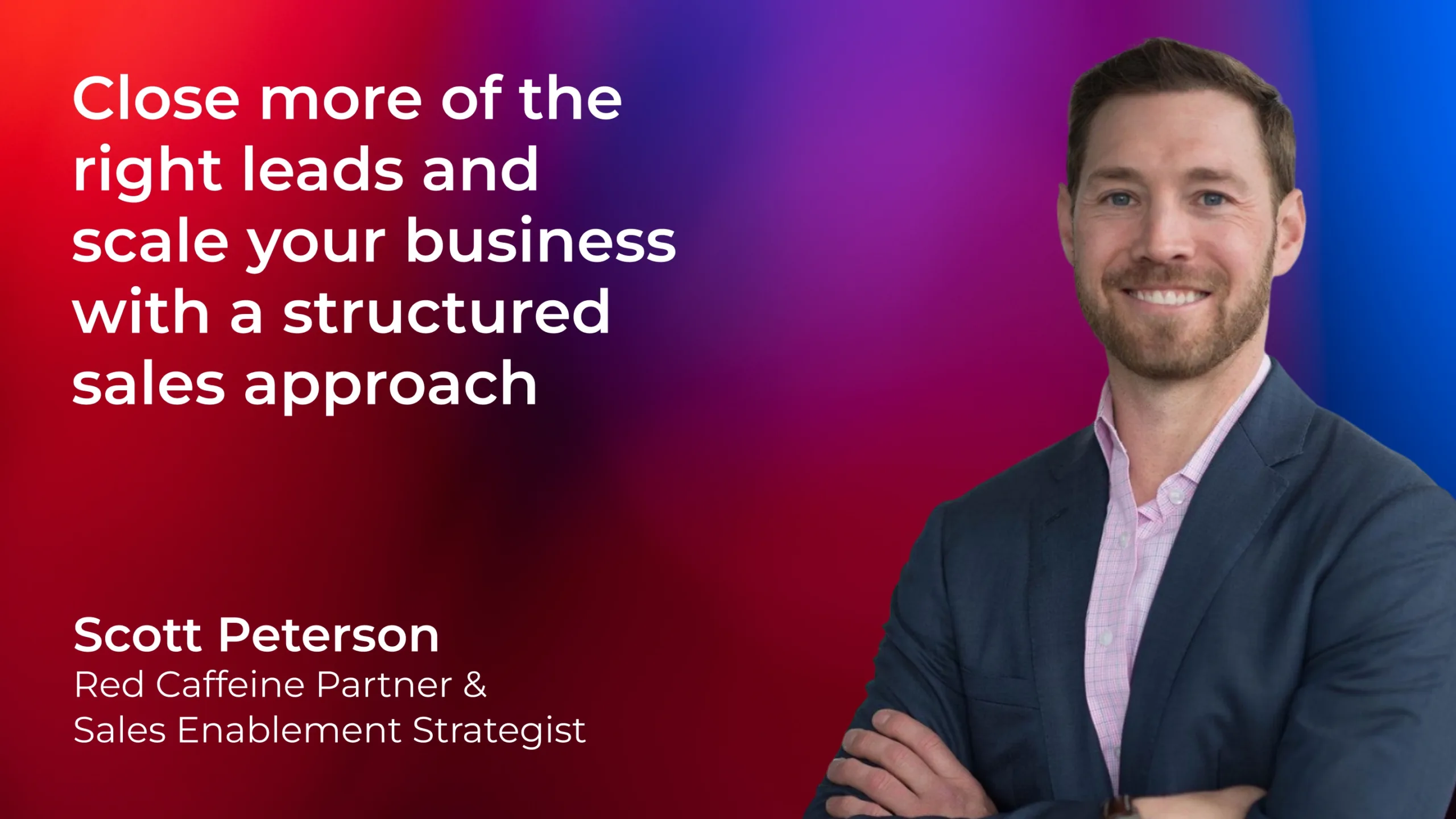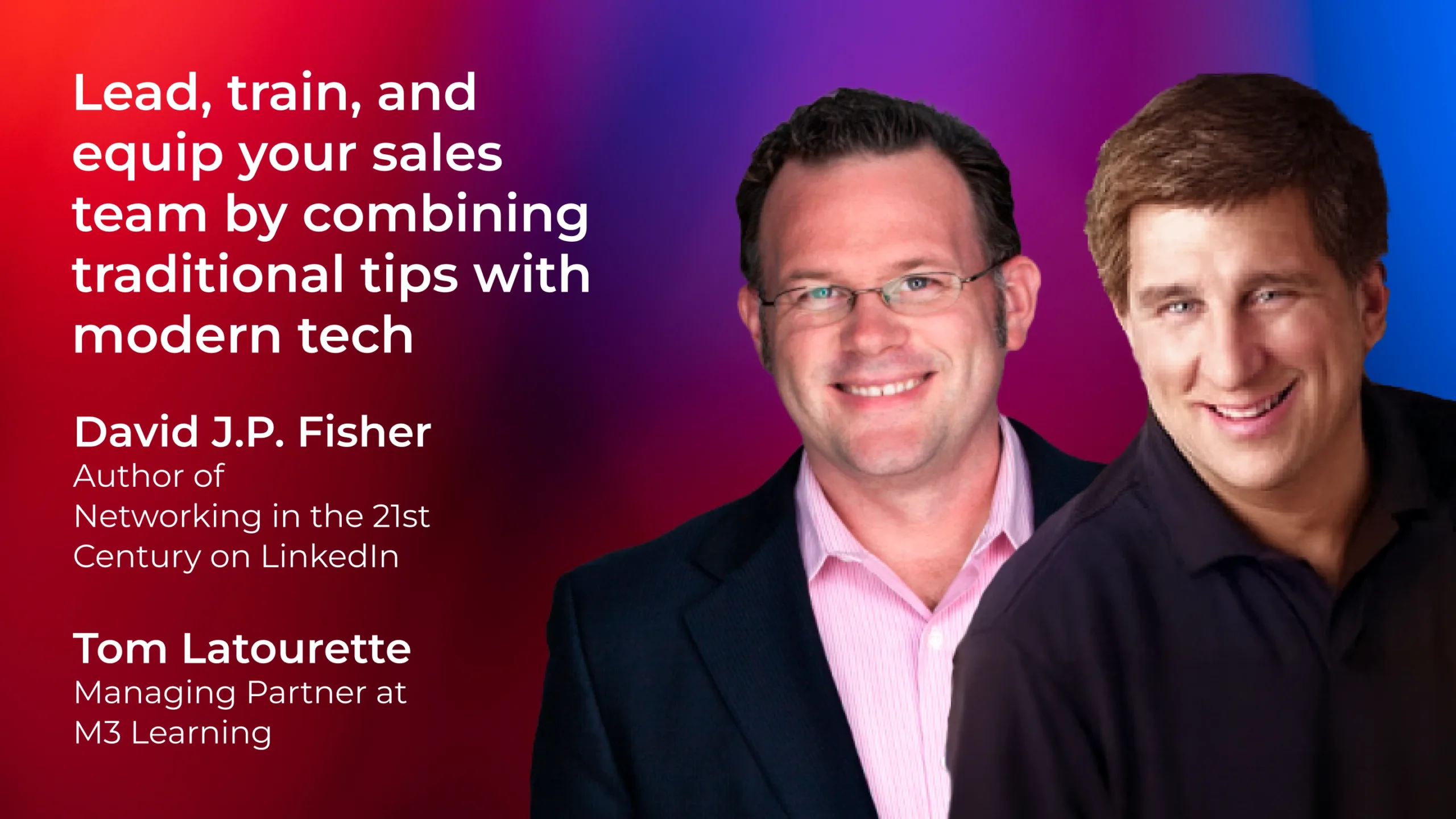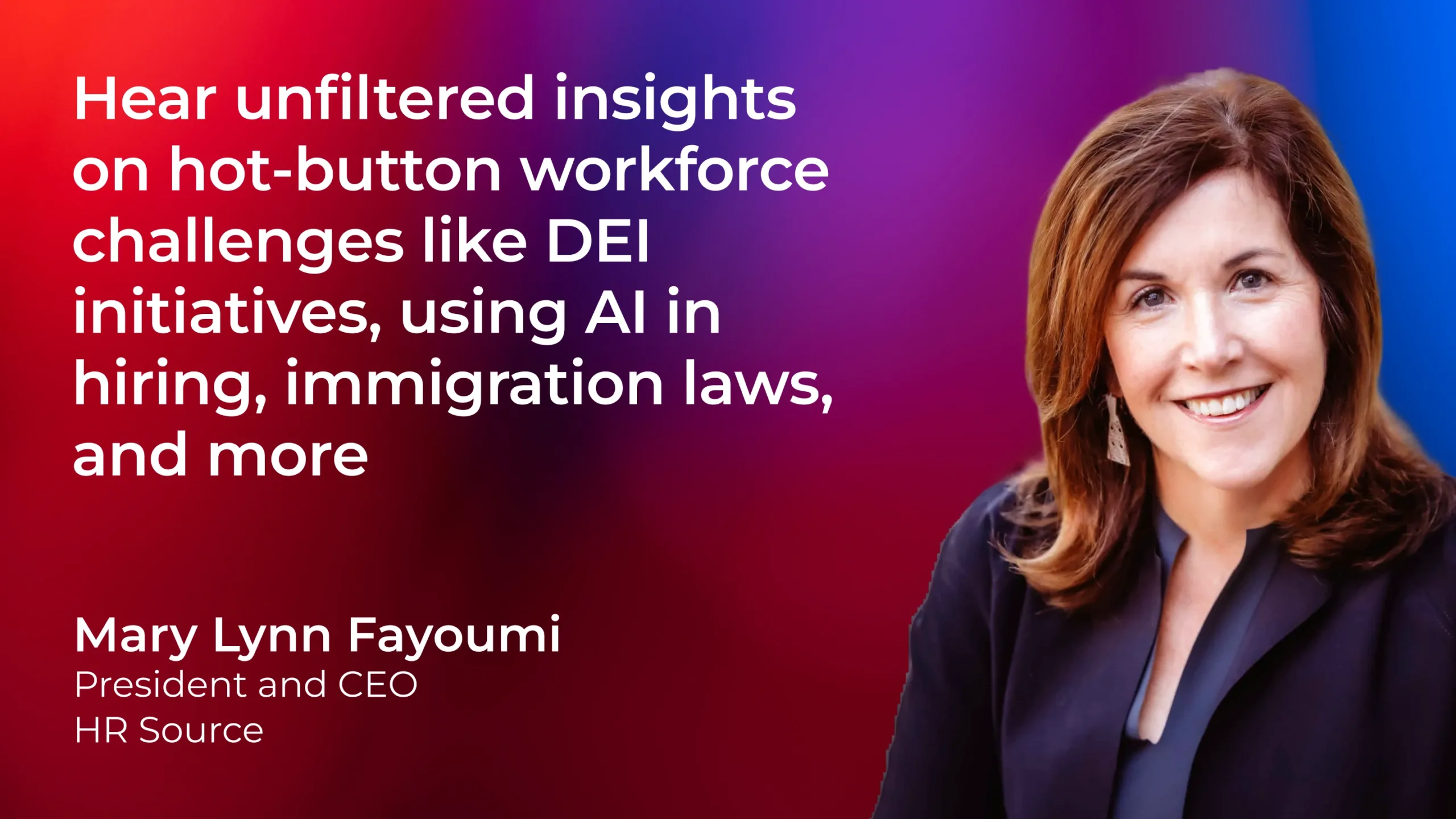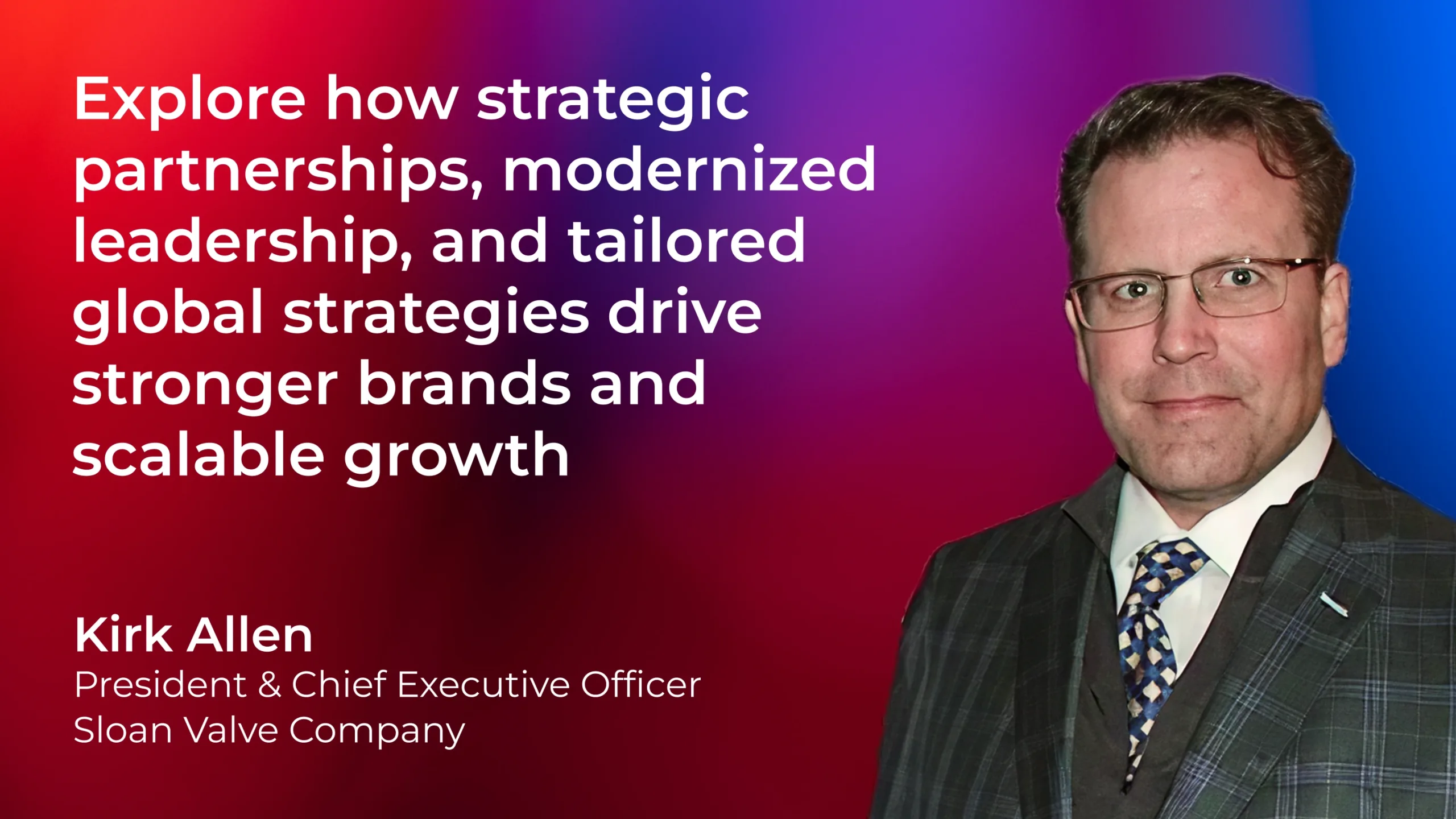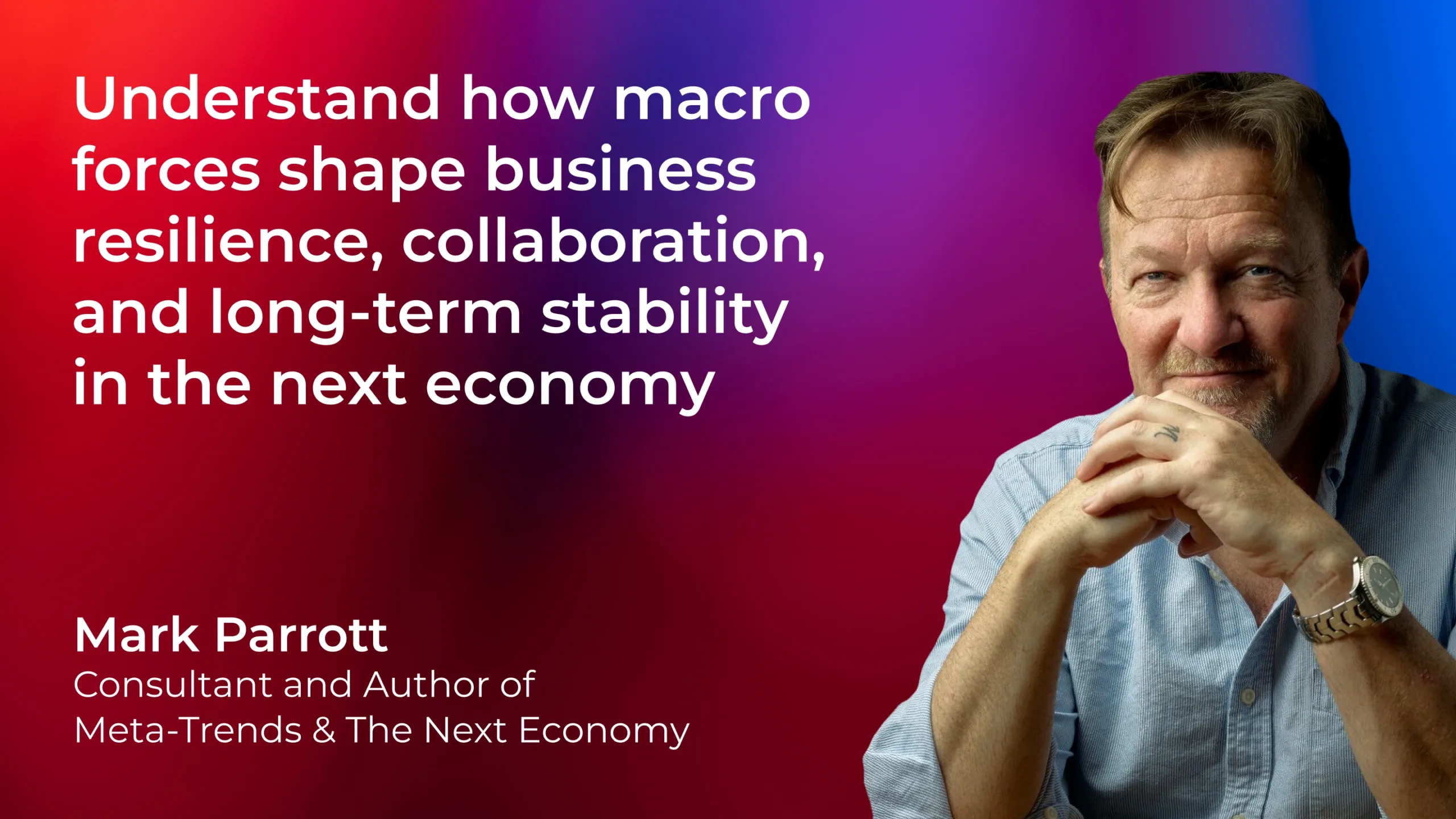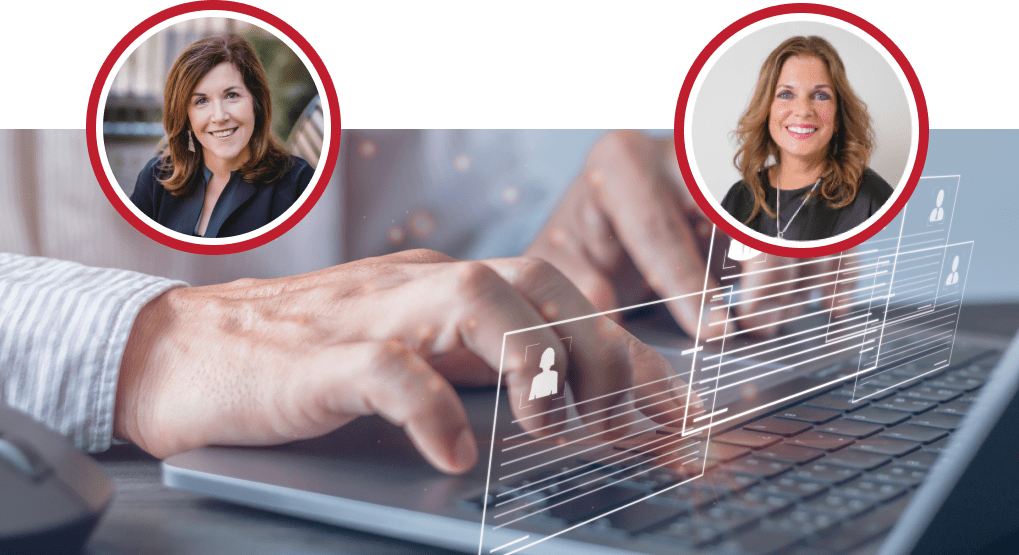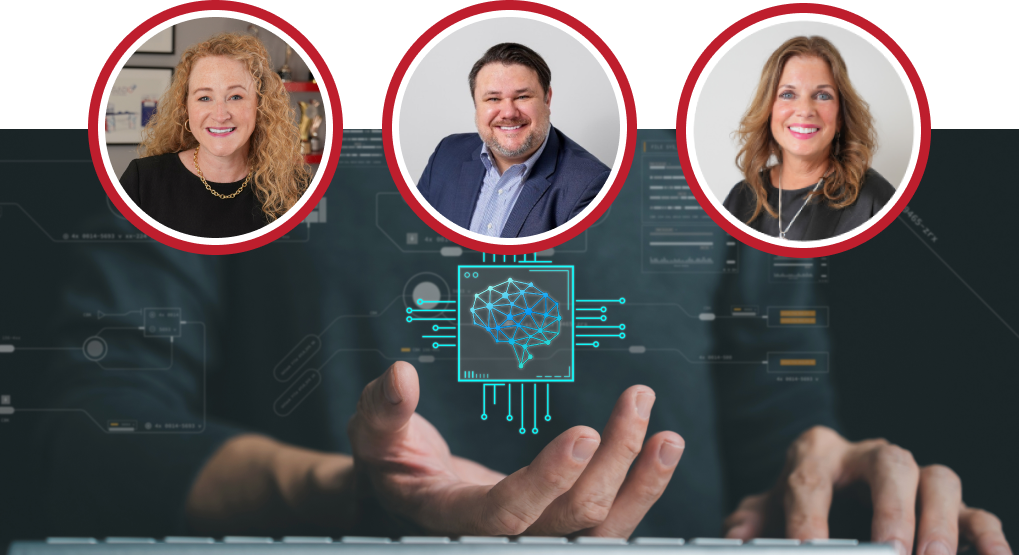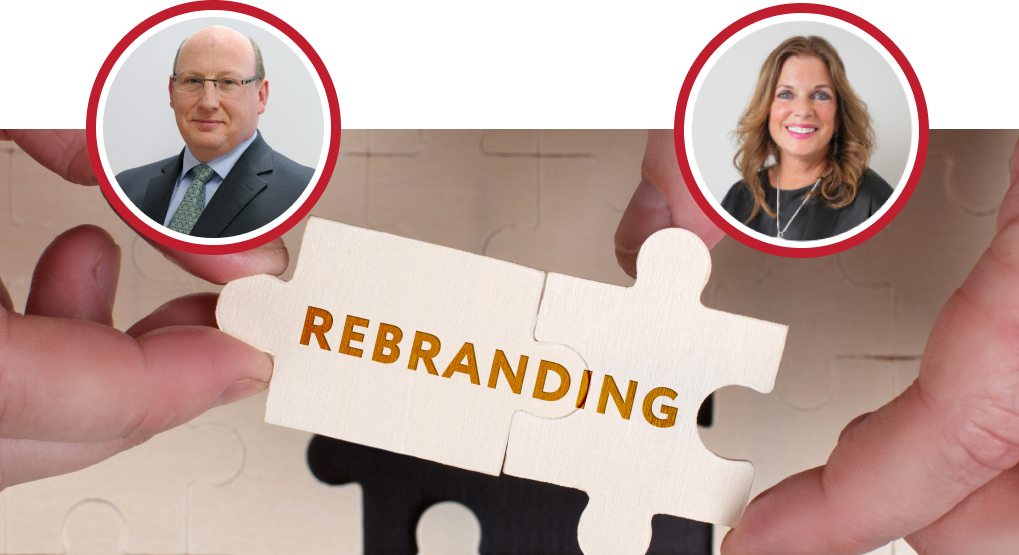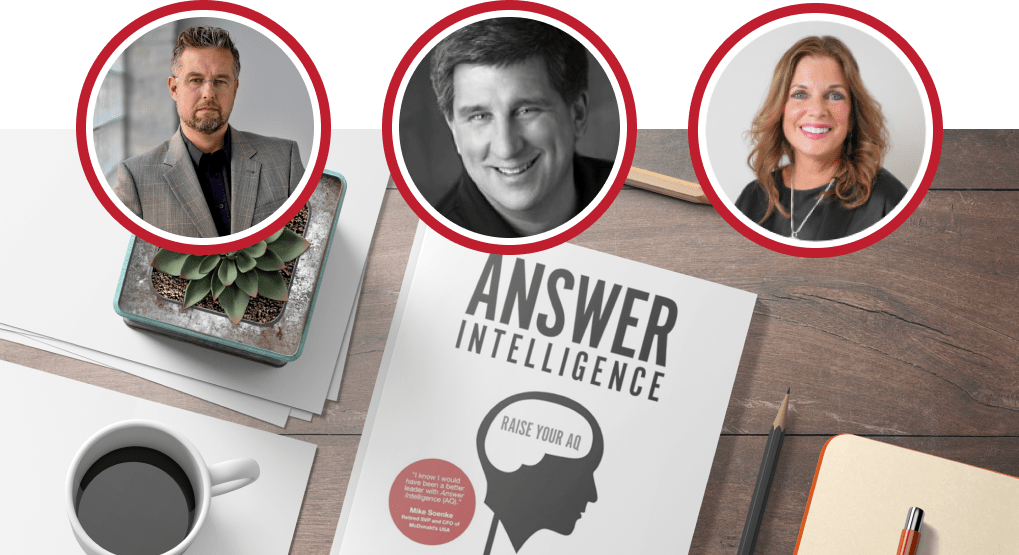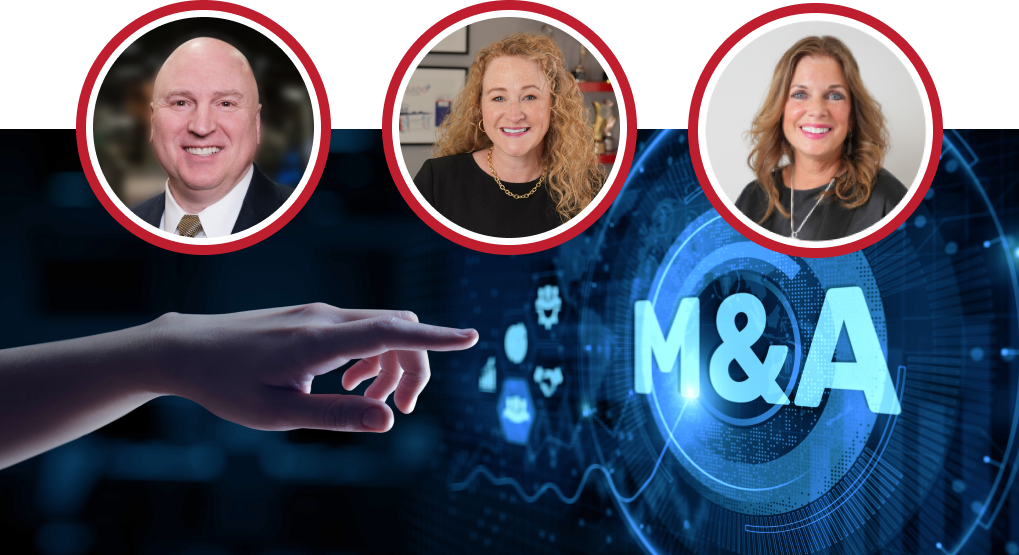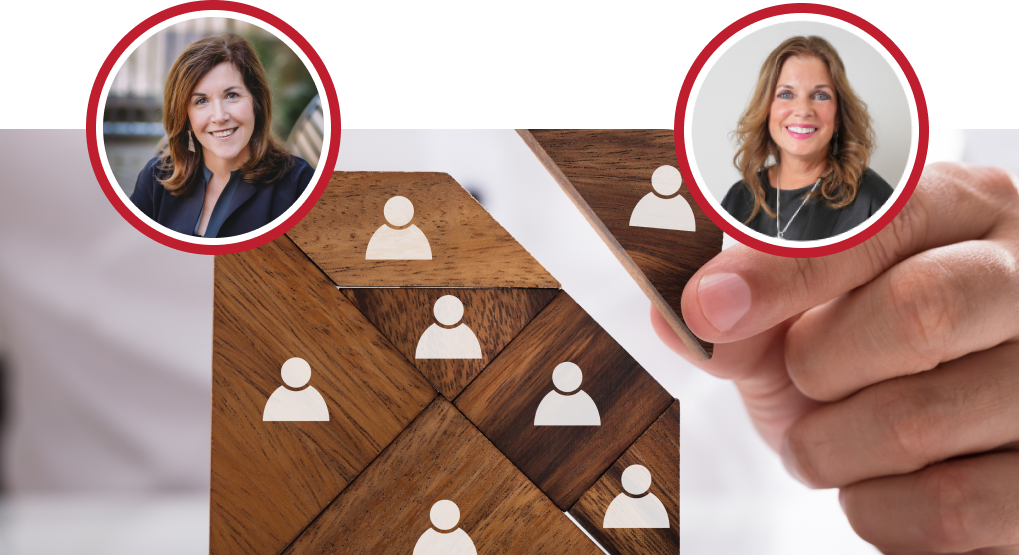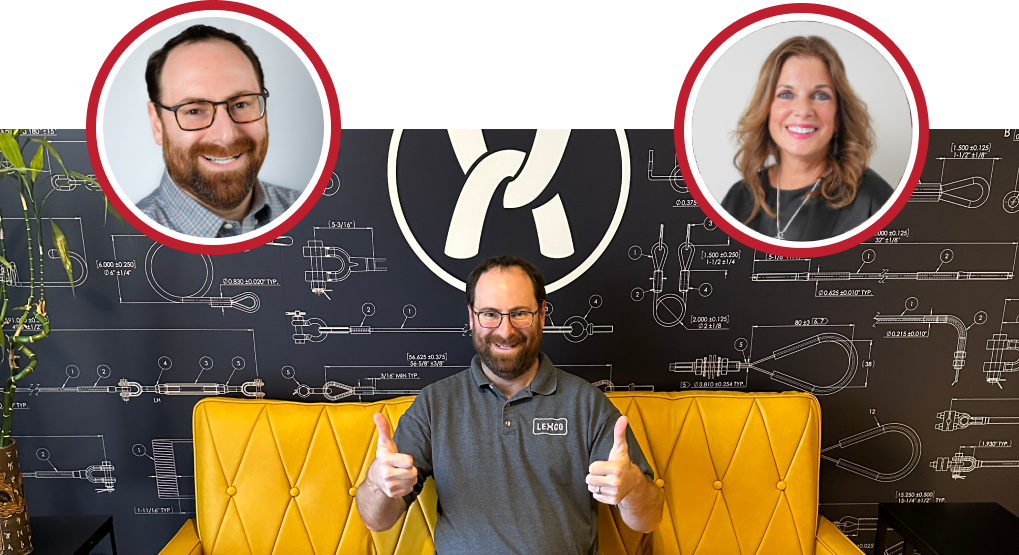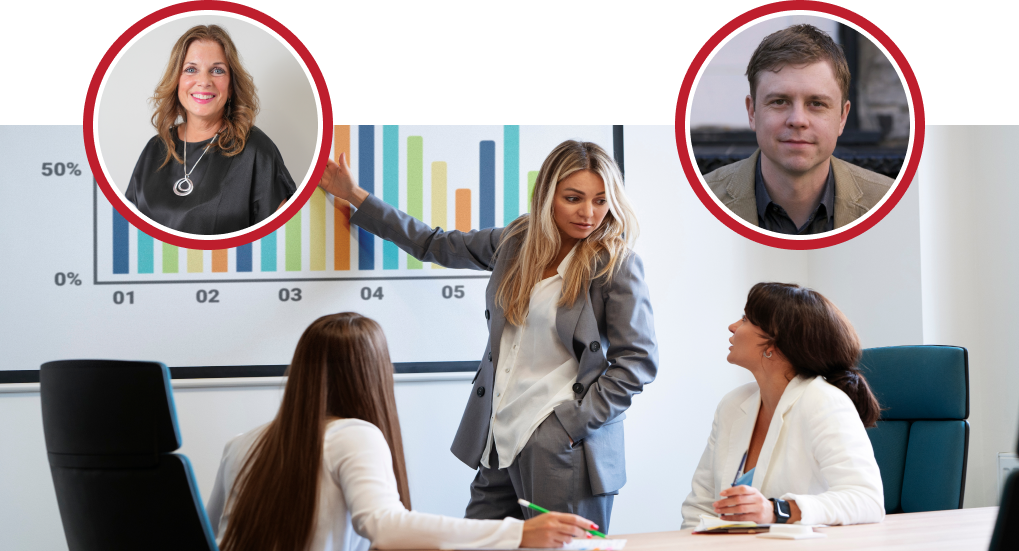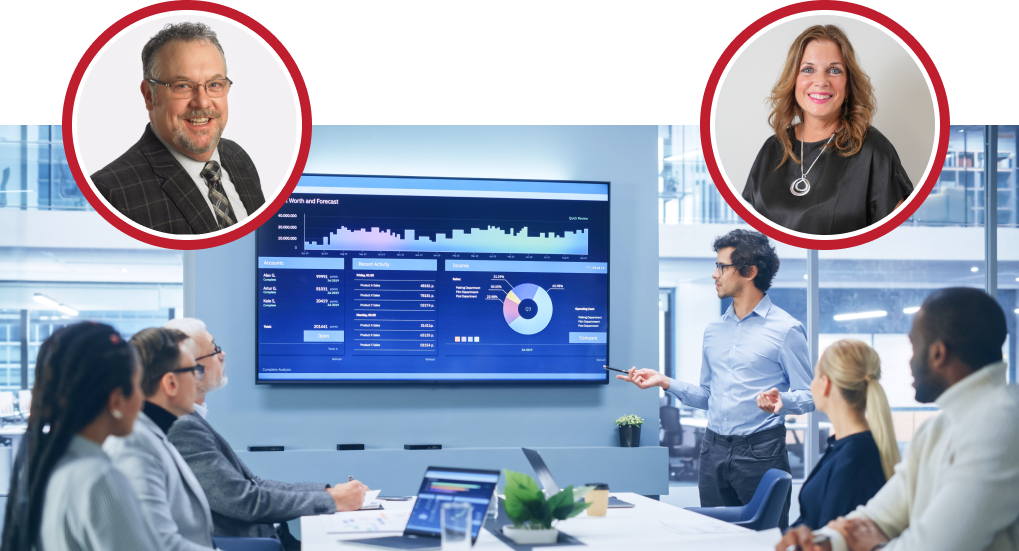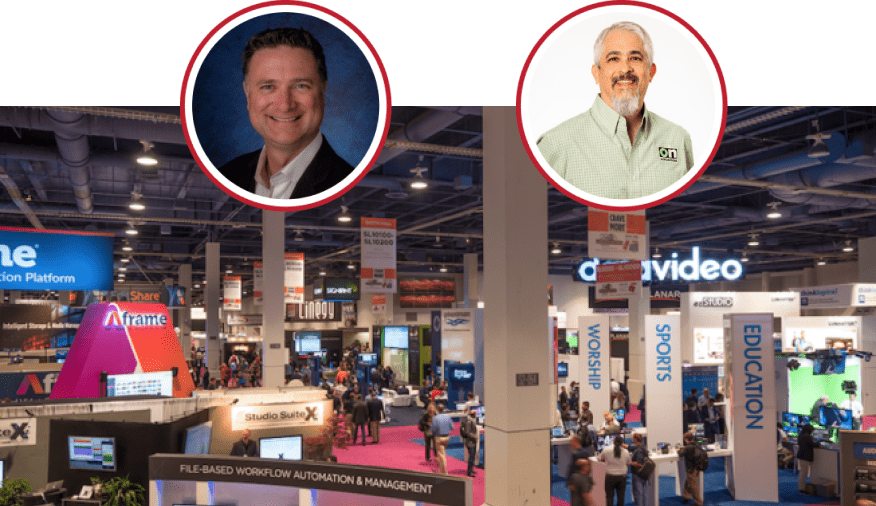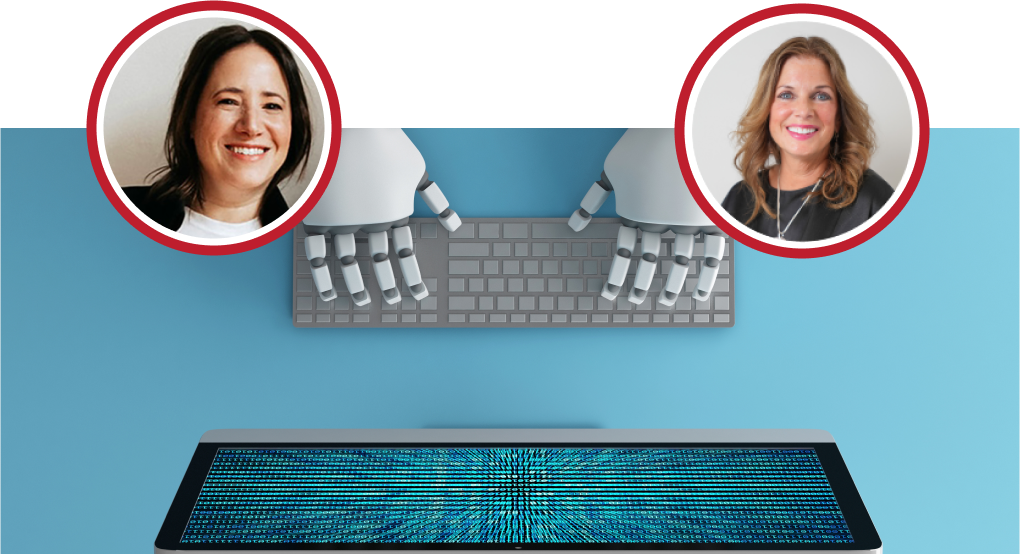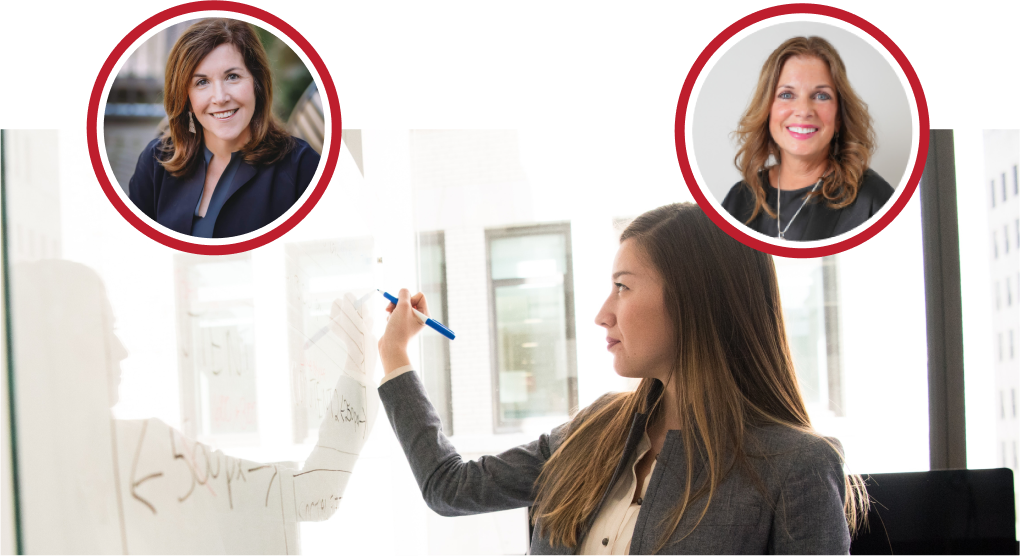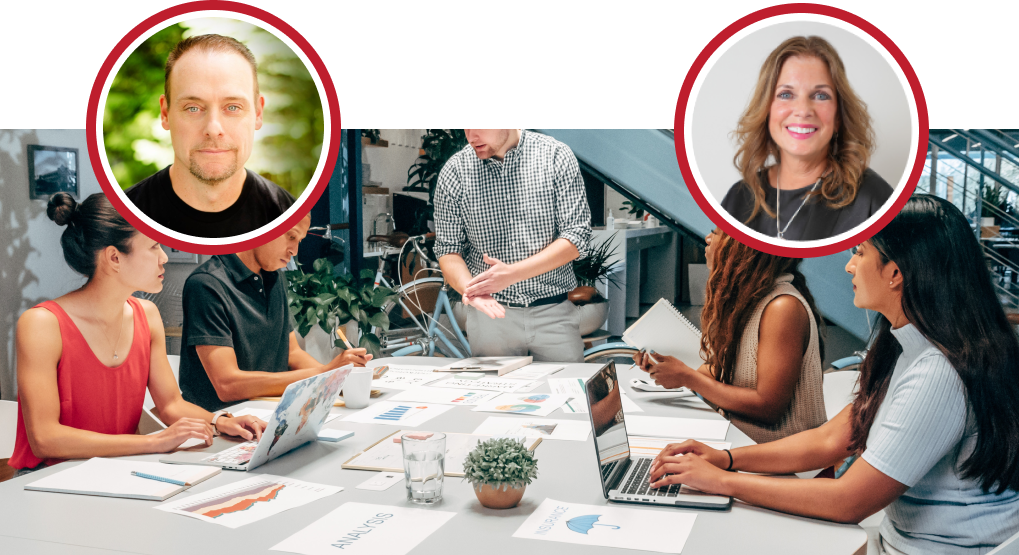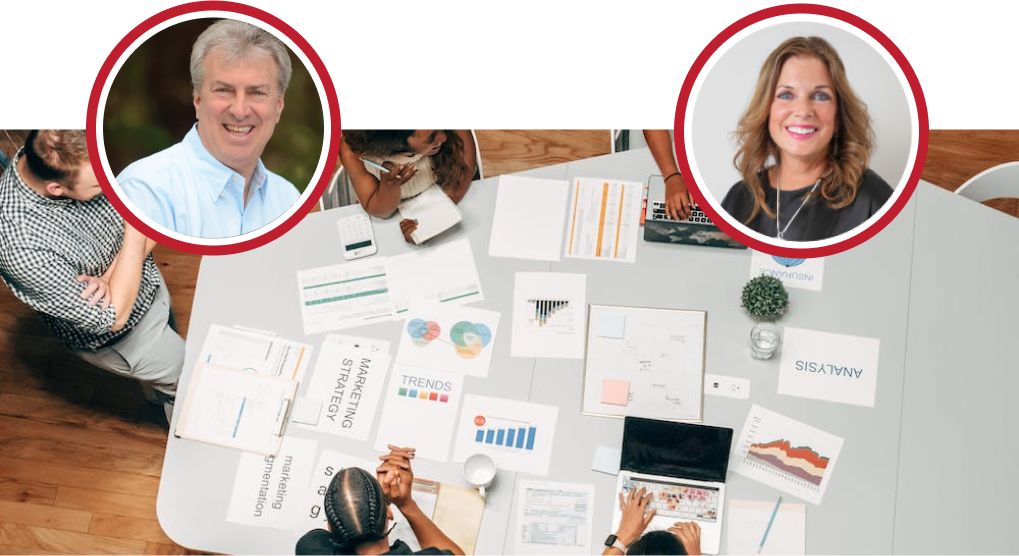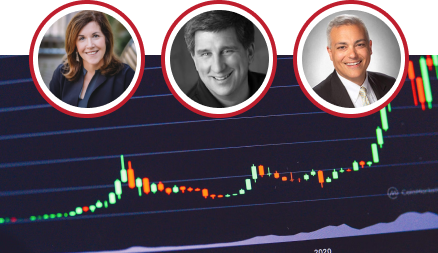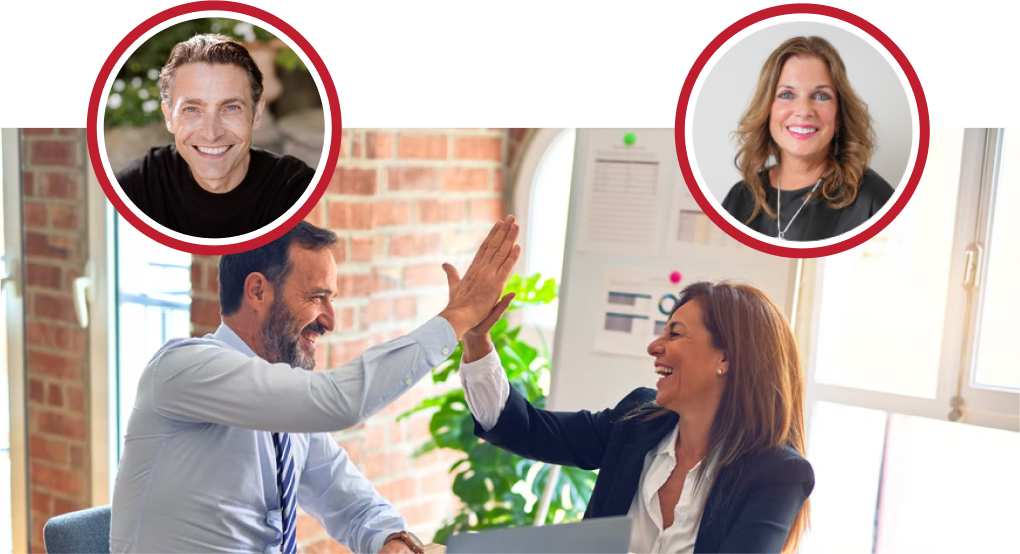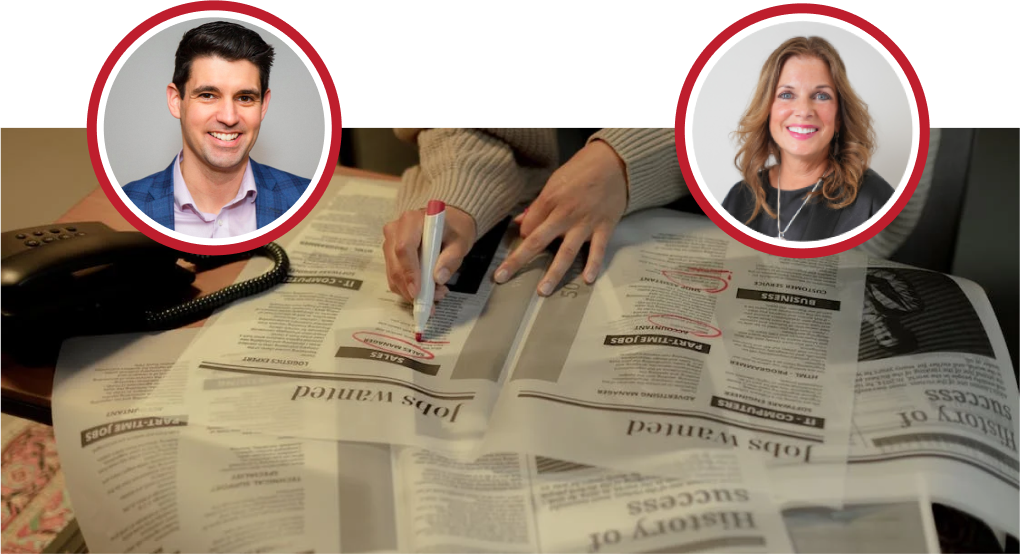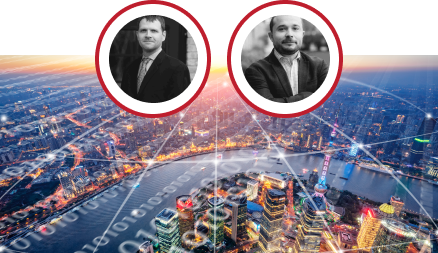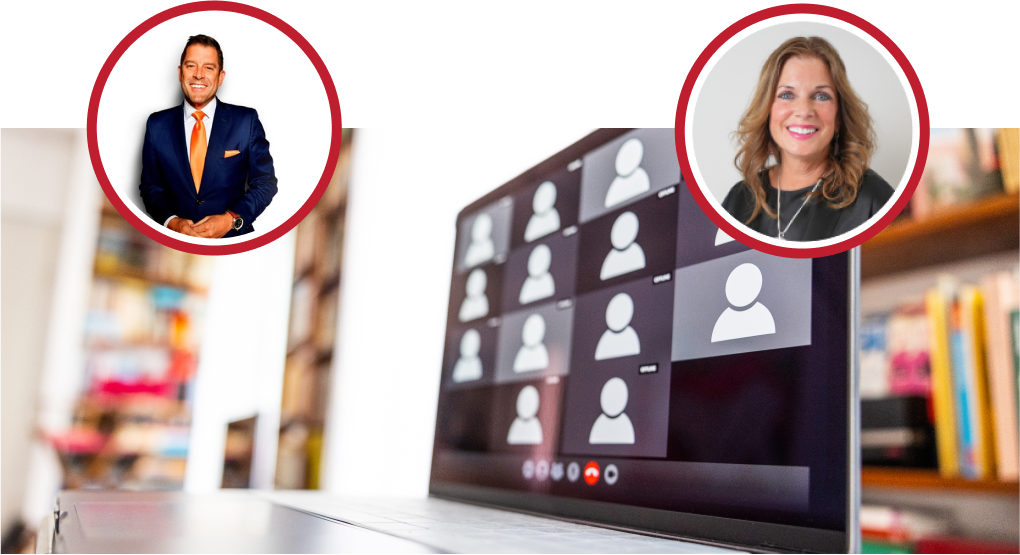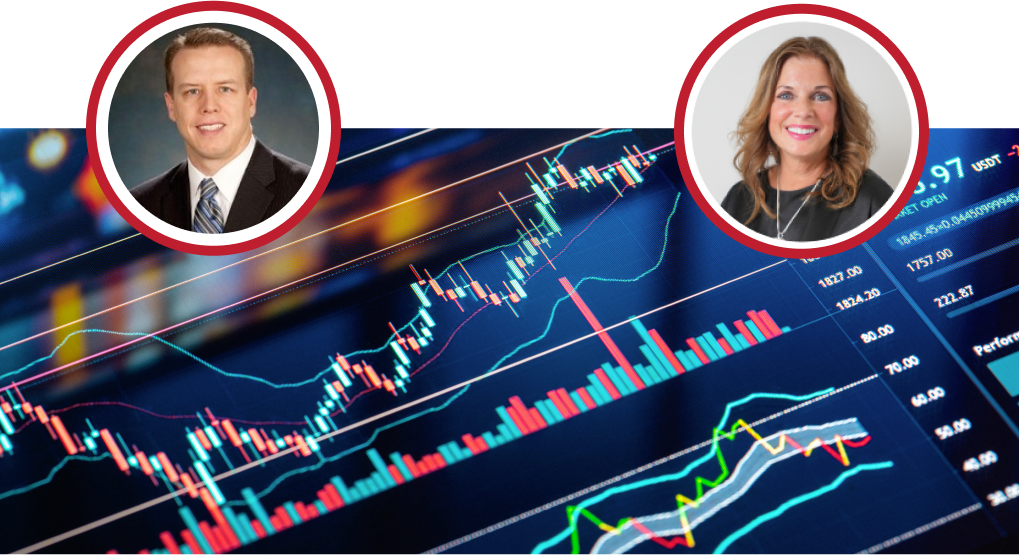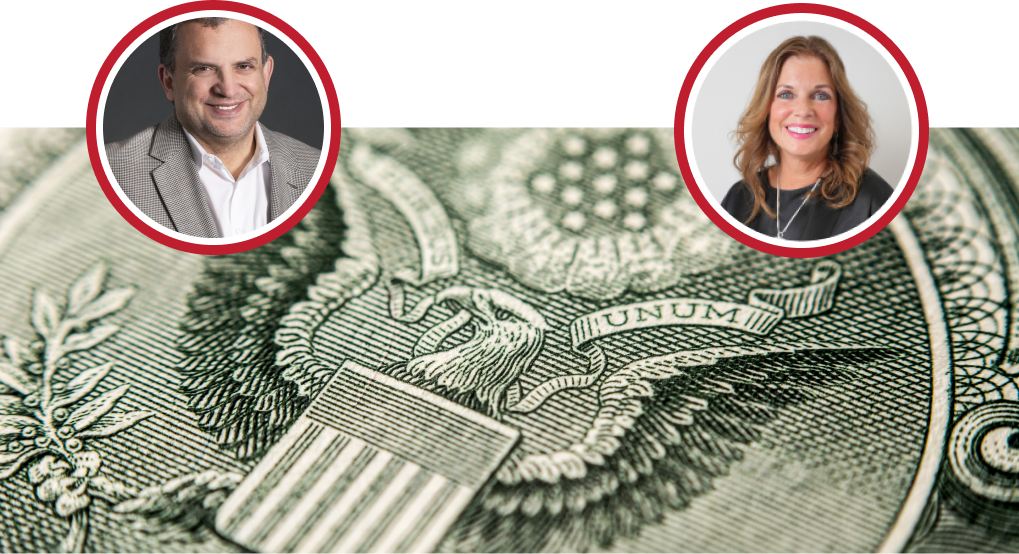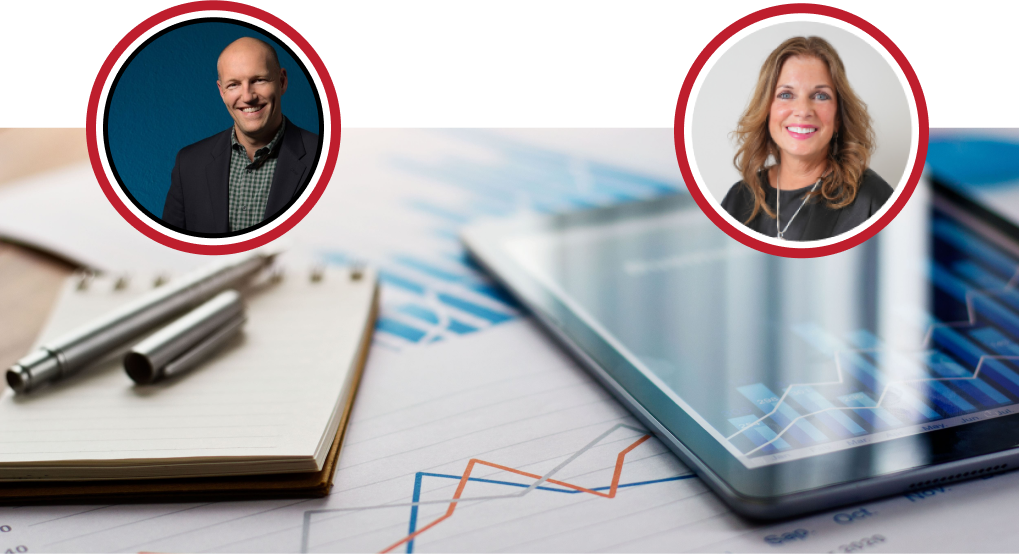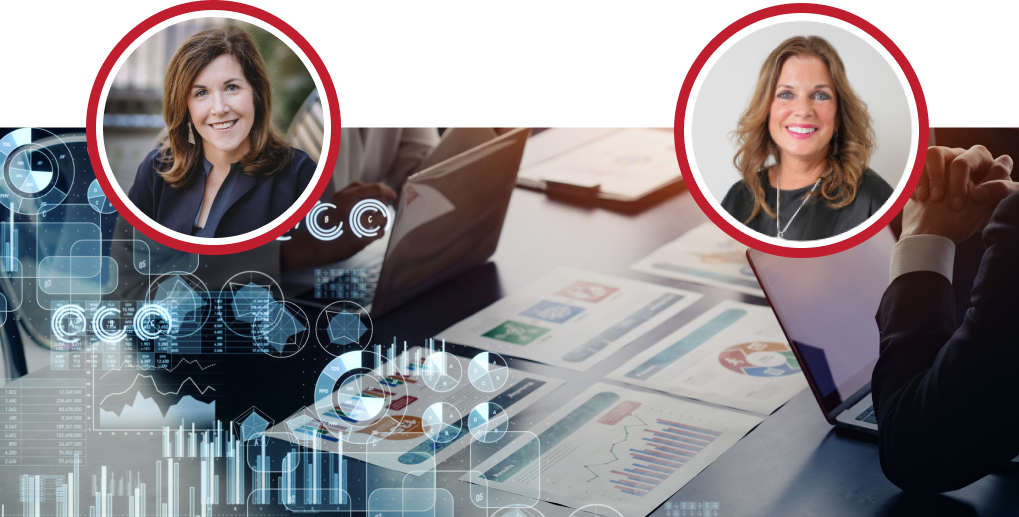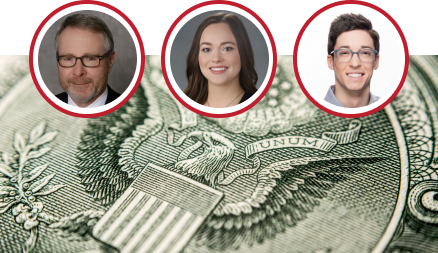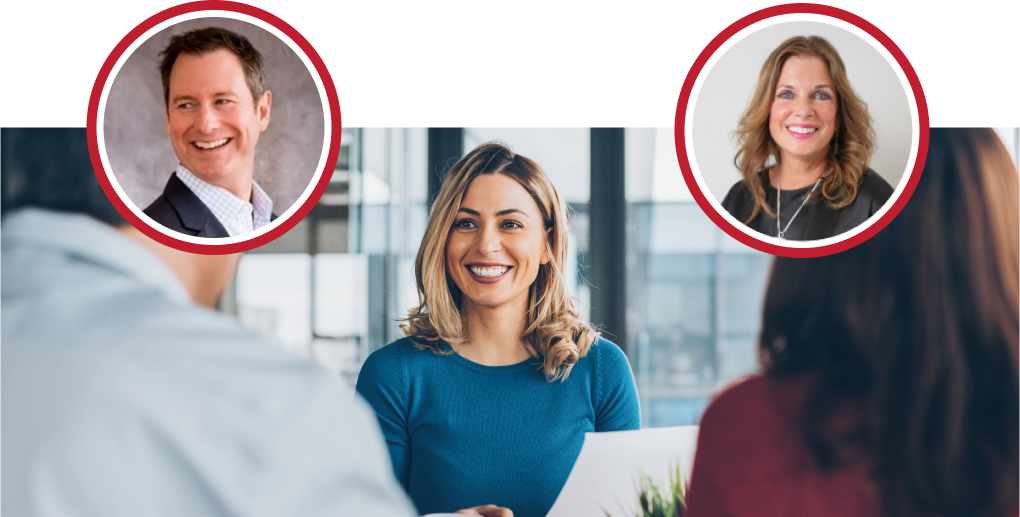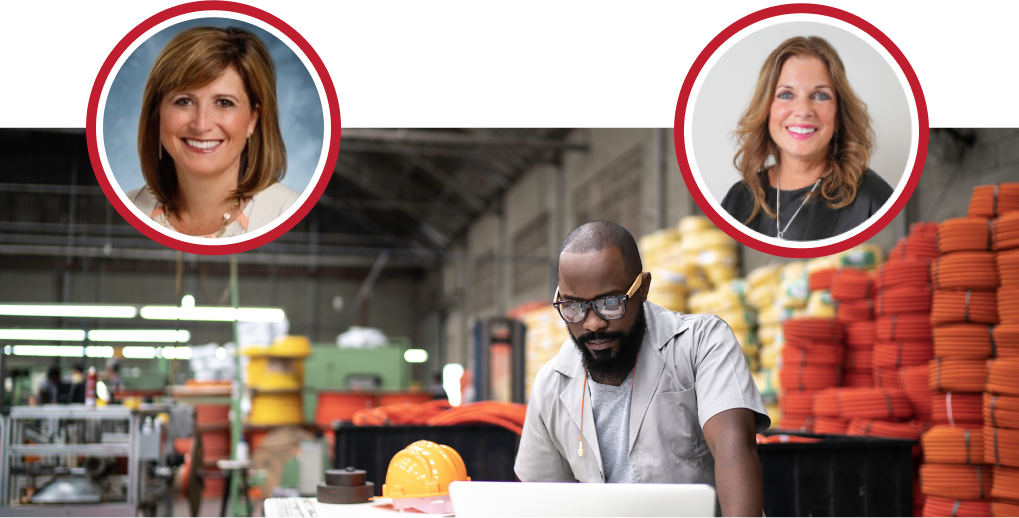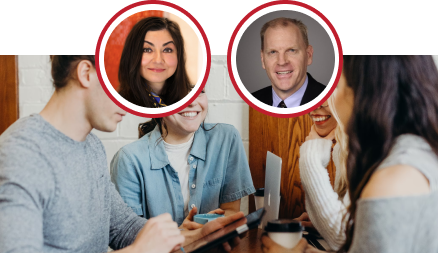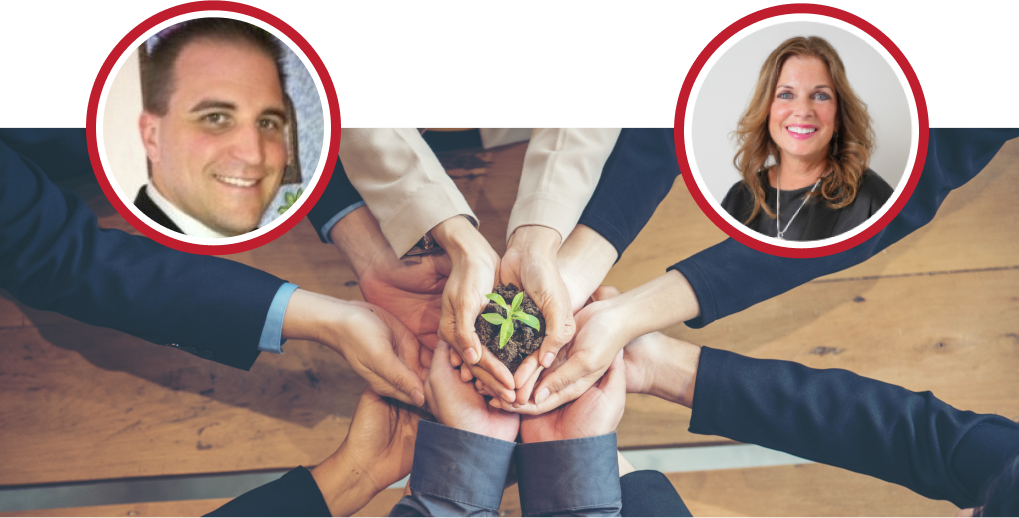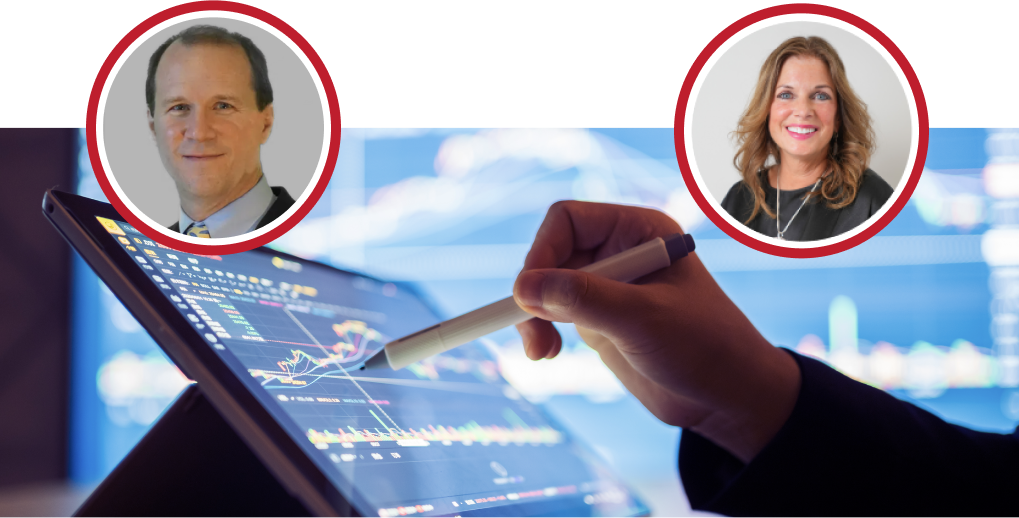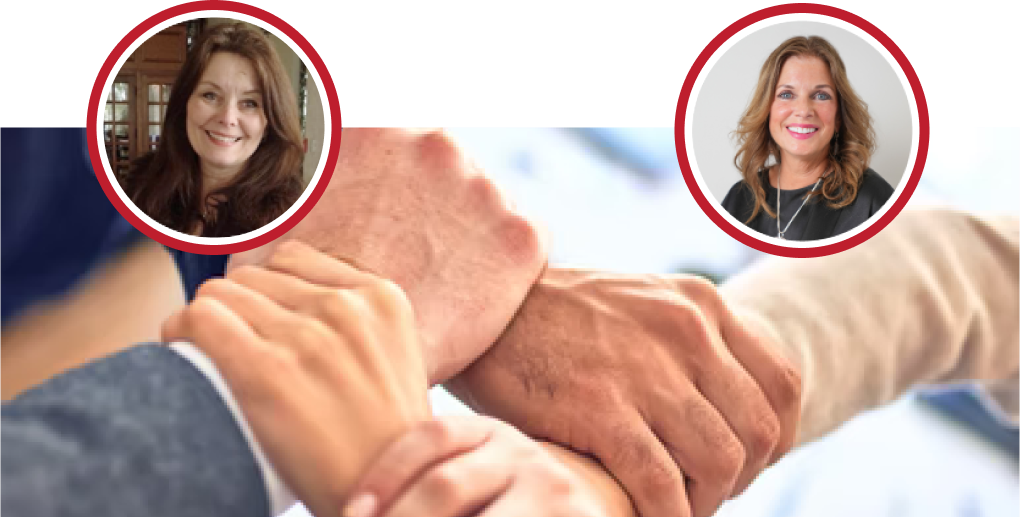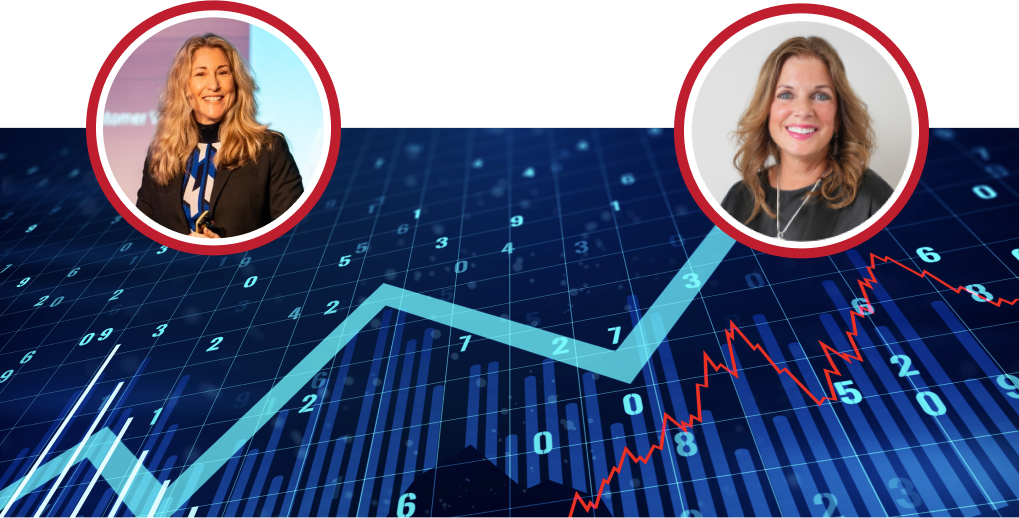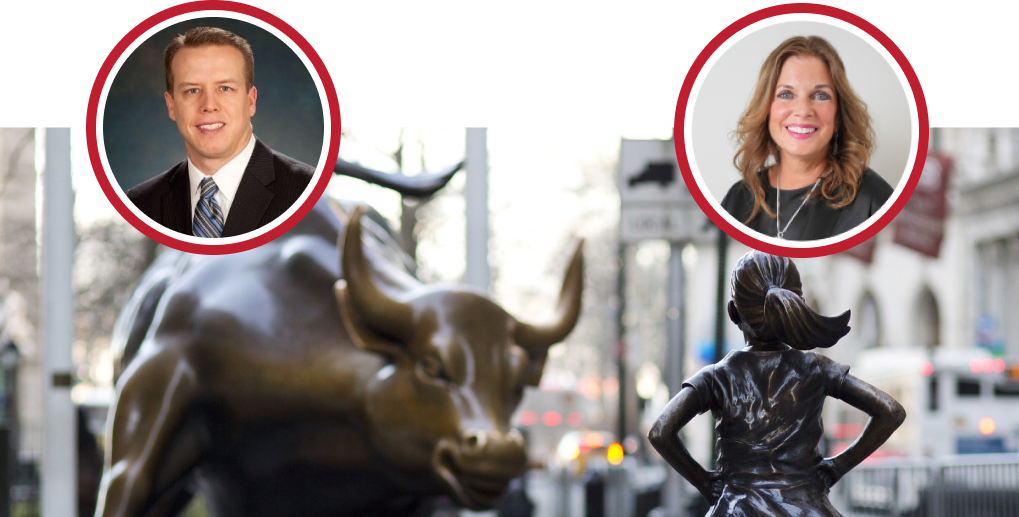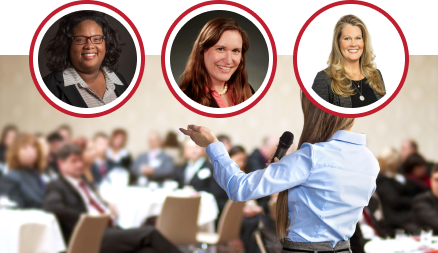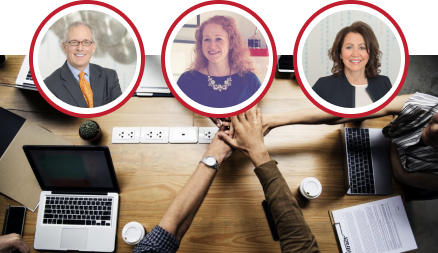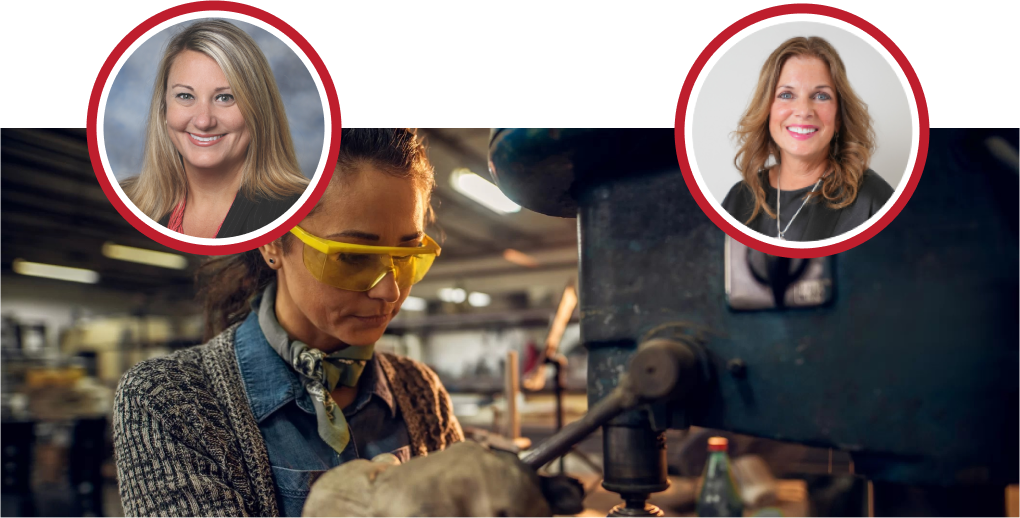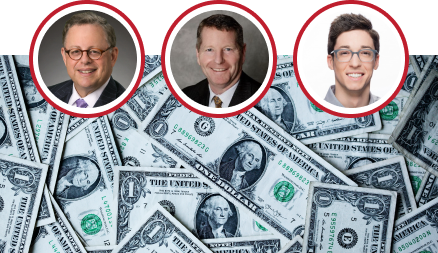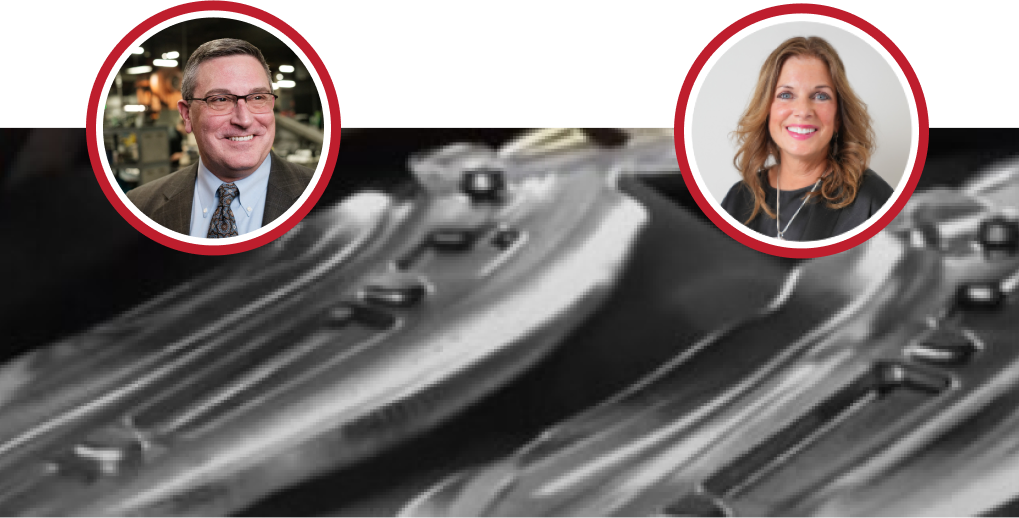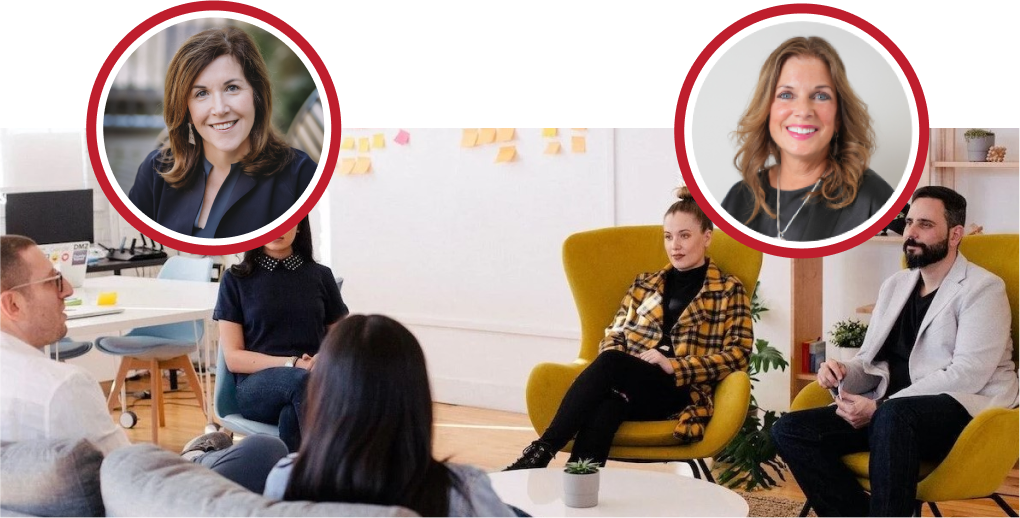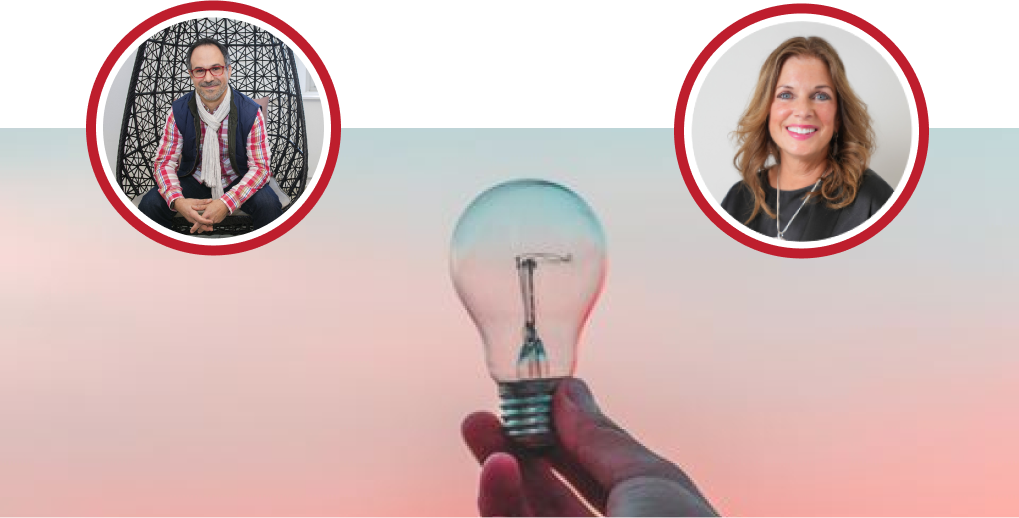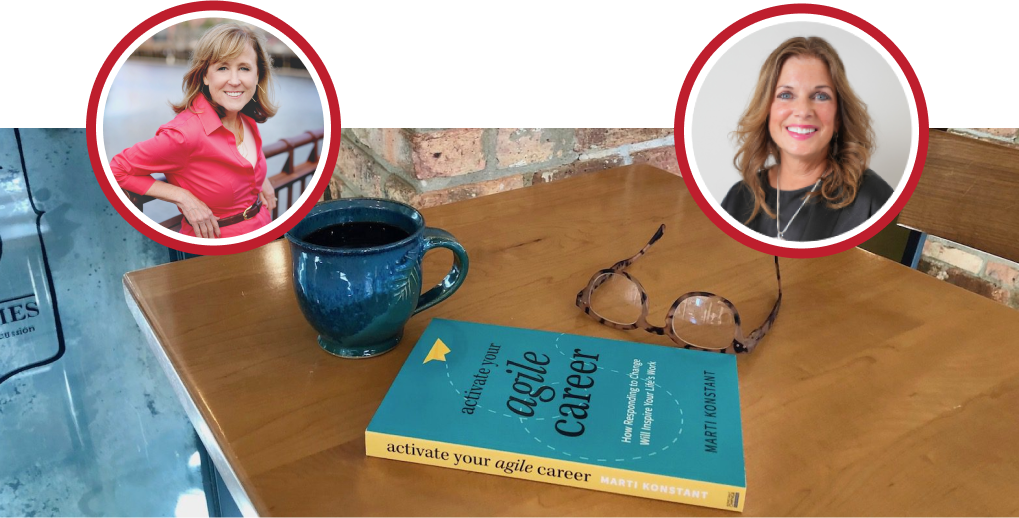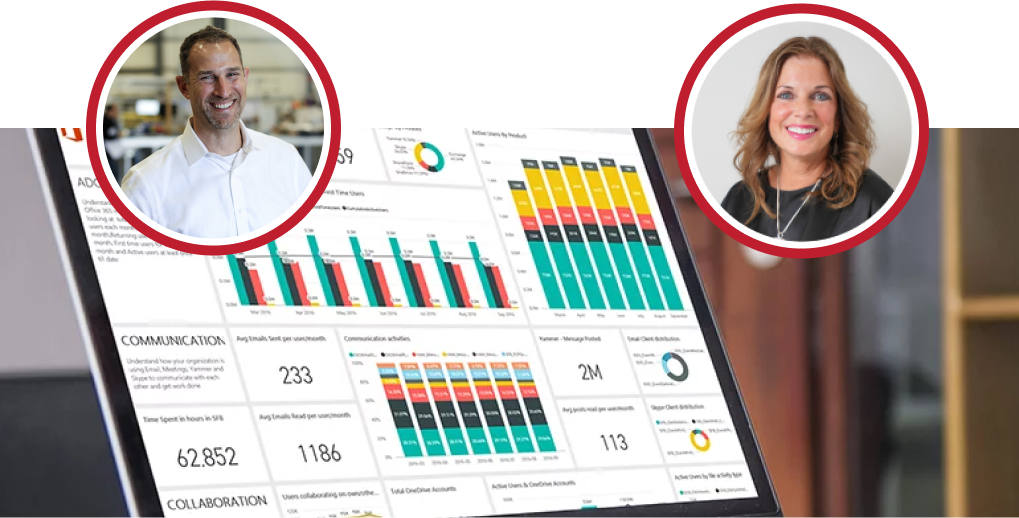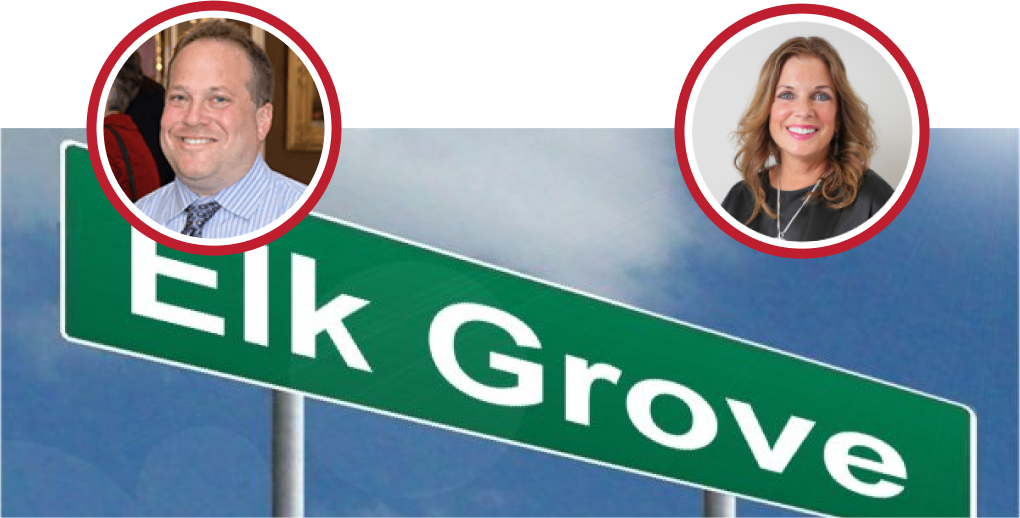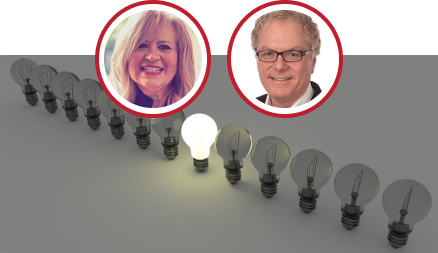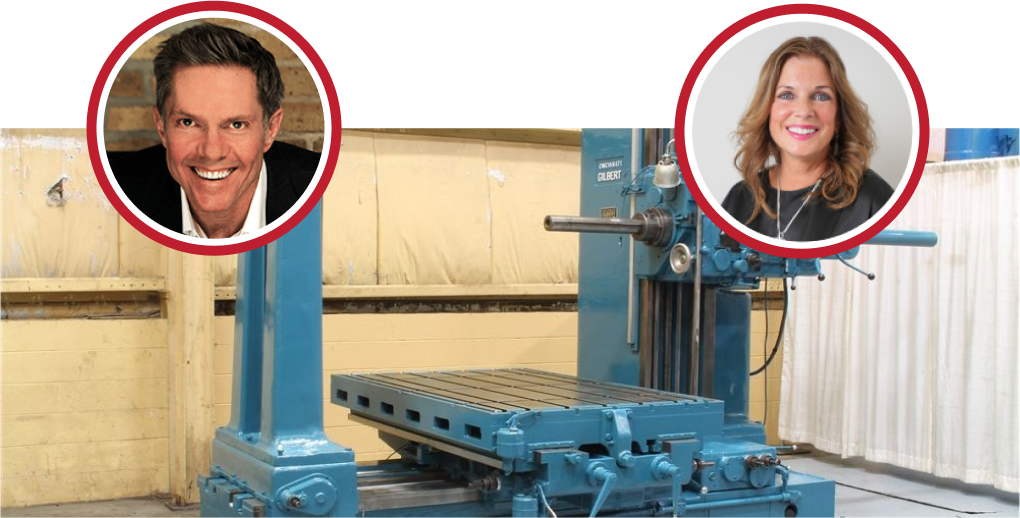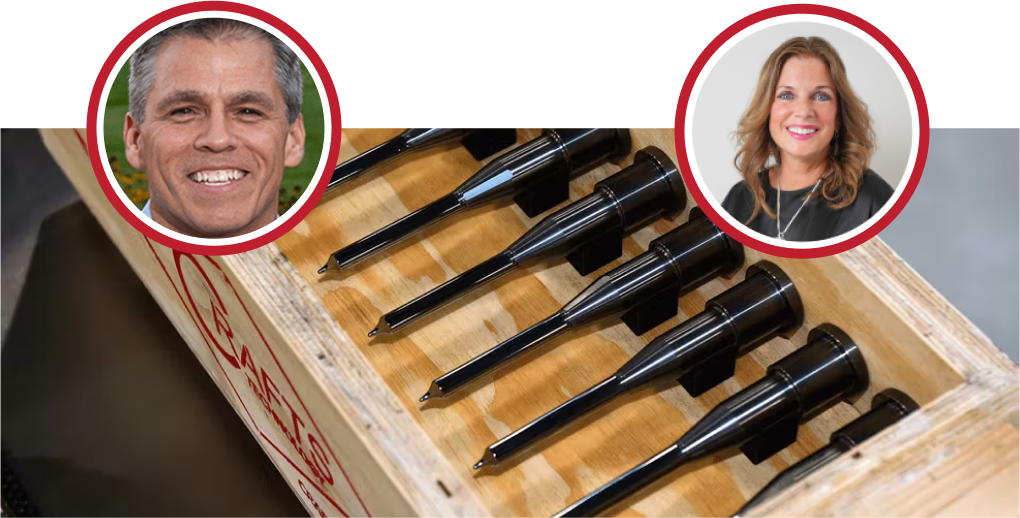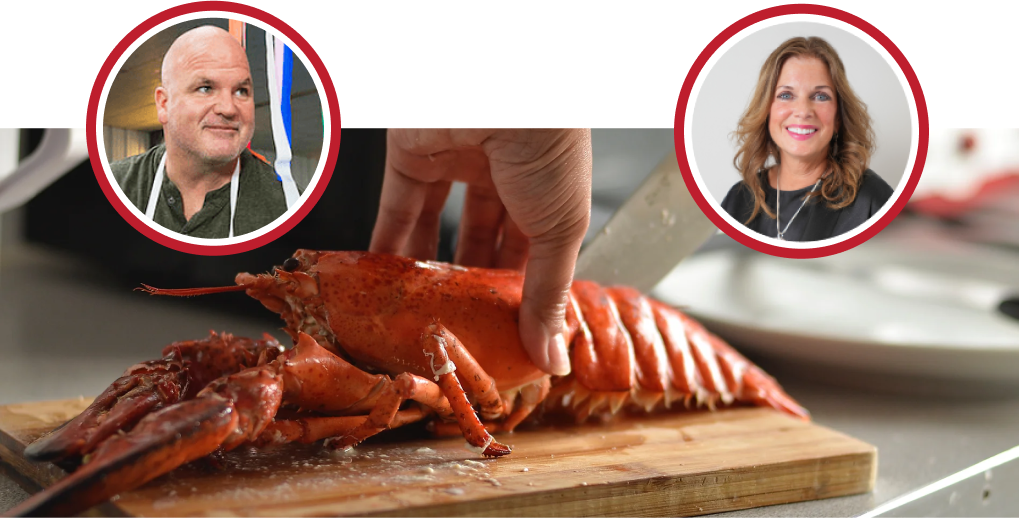Lisa: Get started. So, I’d like to officially welcome Kathy and Nicole to the webinar. Good morning, ladies and gents.
Kathy: Good afternoon, thanks, Lisa. I really appreciate you kicking things off as always, and Nicole, we’re thrilled to welcome you to “Business as Unusual.” Let’s start with your very eclectic career; you started in more of a B2C space and are now in manufacturing. Could you just talk a little bit about your career journey and then your current role at Brady Corporation.
Nicole: Yeah, so my journey started off as unusual. I was a political science major, clearly not doing a thing with that right now, but that’s, so that’s all right. So, I started off in agency worlds and found my way to sears, and probably started a bit before online was a big deal and really started in the catalog, and so obviously that morphed into online and spent a good amount of time 15 plus years at sears building up their digital capabilities their website the influence website had on store sales, etc. and that’s really, where I got so much great experience, that has kept with me and helped me learn along the way, from sears I went to an automotive technology company and then about four and a half years ago, I came to Brady as, VP of global e-commerce and marketing, and have been able to kind of take my learnings from B2C over into a B2B world, and I’m just so thrilled to be at a company that is a hundred plus years old and continues to innovate and to lean forward and into digital. So, I have a great team. There are great people and great products, so really happy to be here in Milwaukee at Brady.
Kathy: Yeah, that’s so cool. We work with a lot of businesses that are 50 to 100 years old, and it’s just fascinating to see the evolution of those organizations and so what we talk a lot about at Red Caffeine is the lanes for growth, growth opportunities, and technology is I believe the top of mind for many organizations today, I just, was watching a webinar and read the mid-market indicator report that’s put out by the national mid-market association, and they say that organizations are investing heavily in digital transformation and those of us who worked a lot in manufacturing are like yes, yes it’s time. So, but I mean, we’ve seen it across all sectors, and this is such a huge opportunity definitely accelerated by what’s gone on in the last few years, but why don’t you like step back? I think we narrowed the target of this conversation to e-commerce, but digital acceleration is really important to manufacturers, and maybe you could just step us through that broader landscape of why?
Nicole: Yeah, so first, when I joined here, what like, I said four and a half five years ago, I would say Brady was really ahead of the game before I even got here; they started their first transactional website in 2010. So, think about that, 11 years ago, not only was it ahead of the time for manufacturers for B2B but certainly for manufacturers to have a transactional website. So, it just goes to show Brady’s commitment and the understanding of how important digital is to a customer experience and to the company as a whole , and I think the reason that that Brady’s behind it, and we continue to support the acceleration of it are a couple of these statistics and there’s I’m sure all of you have seen a ton of statistics throughout your time but for me these three really drive why behind what we do so obviously ninety percent of B2B customers research two to seven sites before purchasing, so when you think about that if you’re a manufacturer if you’re a distributor whatever the case may be most likely a customer is going to be touching your website in their evolution of research two eighty percent of the buyer journey takes place online okay it could be researching it could be downloading a piece of content watching a video whatever it is, but the journey takes place online which feeds into the next piece which is really you think about this percent of how many people of manufacturers that happens that that manufacturers influence digital influences offline behavior and that’s such an important takeaway because at the end of the day it’s online influences the behavior offline it doesn’t mean that the transaction happens online because most likely it doesn’t and so to be able to take those three pieces and think about how you create your digital journey is important. So, for me, if there’s one takeaway from all of this from these 45 minutes we have together, it’s this piece that 67 of purchases are influenced by digital, so that’s how we think about it here. So, when I think about the acceleration of Brady, it’s that probably in the past five years, we really did focus prior to five years ago focused a lot on the transactional website, and we continue to do that, we continue to think about what type of content do we need to have how do we get customers to product quicker in the funnel is our checkout experience the best and so that’s absolutely the right thing to do, but we’ve really in the past four to five years broaden our definition of what e-commerce and digital means. So, it’s not just about short-term transactional revenue. Although extremely important, we’ve really expanded upon thinking about the longer-term customer relationships that your website can provide. It’s about leveraging your brand. It’s about self-service customers who want to come to your website and may not want to buy. They just want to see where their order is. They may want to see what they had purchased before. So, all of those things are what really define how we think about our website and all the things that it has to power, and that really drives our go-forward strategy.
Kathy: Yeah, I agree. I think business-to-business buyers are really expecting the same type of buying experience that they have in their personal lives, and, so that it is absolutely translated over to how we think about business, so but like as I know pre your tenure at Brady, the e-commerce site existed can you talk a lot you guys have made a lot of investment in digital but can you talk a little bit about the roadmap and where you kind of started and what were some of the key technologies that were in your stack, strategy and how you prioritize?
Nicole: Yeah, so obviously, I think anybody who’s in e-commerce has 80 000 things they want to do and there’s not enough time or resources to do it we are that’s not unlike us here we have a thousand things we want to do, and my team laughs at me, they’re always asking me to prioritize and I just want it all done but the reality of it all is that we do we take the goals that I just laid out and really create kind of a scorecard of everything we want to do what’s the weight of it how does it impact each of those different avenues and the goals that we have , so we’ve started off five years ago four years ago looking at our platform understanding if we had the latest version of everything added a lot of features functionalities recently, we spent a lot of time with internal search updates product recommendation updates and so there’s been a lot of changes to our website, but I would say in addition to the changes the website we’re really focused on how our sales people how our customers how our distributors can use the websites as well, and I’m sorry our lights go off and on in our sustainability efforts here, so they’ll come back on eventually.
Kathy: No problem; we love that we were just talking before we joined about all the technology in your office, so yeah, it’s that’s pretty cool, and you mentioned a bit about your stakeholders in this process. So, what were some of the highs and lows of engaging the different distributors and some of your sales team in that process?
Nicole: Yeah, so I would say kind of the elephant in the room here, and I think every single company is the words of channel conflict that has carried throughout my career, and I would say when I started here was it was no different, and I have a lot of thoughts on channel conflict, but I will just kind of keep a few and give some suggestions. So, first of all, channel conflict if you’re selling in multiple channels always comes up; I would say, however, that for me, you really have to think about what channel conflict is to me; it’s a very internal-focused issue, and we need to call it like it is it’s the customer does not care so when you think about if a customer lot of people going back to college maybe you want to buy a coffee maker. So ,you go on the Keurig website you do a lot of research you find what you want you’re going to target for other things that’s most convenient for you to buy the coffee maker at target because they did research over here bought over here at the end of the day the customer’s walking out with what she wanted I can guarantee you she’s not thinking about oh my god I wonder who just got credit for my coffee maker purchase was it the manufacturer was it target are they upset how does that work the customer does not care at all and so when we think about channel conflict if you’re really a company that’s focused on customer experience that needs to be what you’re focused on, and you need to work through the hurdles of how channel conflict could potentially be an issue that being said I understand it’s a real thing I completely understand it but if you go back to if you look at this slide where you see so much of how online influences offline behavior that’s part of the story I have here and have had in my career is that there’s data to prove how much that actually helps positively impact other channels so for example forester did a study a few years ago about manufacturers who sell direct and the impact it had on distributors and in other channels and at the end of the day manufacturers who are selling direct it actually has a very positive influence on distributors it has a positive influence on the brand. So, it actually highlights it helps your other surrounding channels when you have a great website and can provide all of that great information now; the third thing I would say when you think about our internal sales folks or any of the key stakeholders is I’m always big on then showing what that really means. So, if you can go to the next slide, this is a super messy slide, and it’s purposefully messy because this is a very messy journey, and this is a real-life customer journey example that I bring up a lot when I talk to our internal stakeholders our sales folks, etc. to really show how many channels a customer touches in this particular example a customer went to Google and typed in label cabling, and wired went to our page that has a lot of great information about what type of printer you may need for if this is the application you’re looking for from there the customer decides to go to our product page, and you see that here on the left-hand side now customer decided what I’m not too sure if this is exactly, what I want, so they engaged in one of our calculators that walks them through a series of questions, and then we’ll be able to tell them how much money they could save time, etc. So, all great, but the customer, in this case, decided what It’s, and it’s a fourteen thousand dollar purchase which is a big purchase for us; I think I want to engage with the chat rep, so our chat rep engage with a particular customer and through a series of back and forth they decided it was best to have a salesperson talk to this particular customer salesperson reached out to the customer had a great conversation and the customer ended up buying, but the customer didn’t buy on our website the customer bought in a different channel, and that’s completely fine what helped is that we had a lot of different pieces of information that really helped the customer determine what they want at the end of the day they need to talk to somebody else so the power of thinking about online and how that really helps so many partners around you are so incredibly powerful and key at least for our strategy here, and I would suggest other companies are thinking about it that they should.
Kathy: Yeah, so I mean, what is your viewpoint now? I mean, I love that you described this very nonlinear sales experience because I also create a lot of buyer journeys, and frankly, they’re not going to follow stop a through it’s some people may start at the step and so like where do you see the website fitting in now in today’s, in today’s buying landscape?
Nicole: Yeah, so obviously digital was really important pre-covered, and it’s more so now, so if you can go to the next slide. So, McKinsey did a study this past year, and they had a lot of great insights this is just pulled from that that survey but at the end of the day we knew online digital capabilities was important Covid has just accelerated that twice as likely customers are twice as likely to leverage digitally where pre-code in certain countries UK and Spain it’s their three times as likely to use digital talk about self-service tools that is more important now than ever and at the end of the day is it’s about the customer experience online and more likely than not if you have a really bad experience you are going to lose the customer so when we think about the website we take all of these things into consideration and the weight of the website is now greater than ever and the other piece that makes the website even more noteworthy than previously is the fact that the selling model has changed so the next slide so when we think about remote selling obviously all of our sales people, and I’m sure many others haven’t been able to visit their customers in a long period of time, and so we’ve had to find a way to make sure that we could still engage with our customers mostly using digital means and so remote selling from what McKinsey has found is remote selling is going to stay around even post Covid so 75 of decision makers in the B2B world say that remote selling is equally or even more effective for their buyers as well it’s, it’s less time spent it’s more effective time spent, and then the other piece is that 20 to 30 percent of B2B buyers that’s they don’t ever want to they only want to fully in integrate and interact with buyers for a full life cycle in a very small portion of time. So, that’s when you really have to think about how your salespeople can engage with your website, use the tools, think about how they can do remote selling, how they can have conversations pre and post-meetings and follow-up, and that’s really the focus we’ve had for a long time but more so over the past 18 months of how to make our website more of a selling tool to both our sales associates and even to distributors as well.
Kathy: Yeah, I mean, I always find that as a kind of funny thing when you launch a website, you don’t really on board the team to how it integrates into the process of helping them close deals or this the sales team specifically but, I love some of the data points I think part of the thing that we were trying to help provides some ideas for people to get buy-in at their organizations for you to know digital investment it may not be e-commerce all the way through to buying purchase but creating e-commerce like experiences content that really engages people around products but tells us a little bit about some of the things that you guys did to involve different stakeholders that are, involved in the sales process in into how you were redefining the customer experience?
Nicole: Yeah, so we involve our sales team a lot, and they are really fully invested in our digital capabilities, which I would say is such a great thing here is that our salespeople have been engaged have been, giving us a lot of good feedback on the types of tools, content, etc. that they need to be effective salespeople so one of the things that we ended up doing that we just launched, a few months ago was our virtual showroom which you’ll see in the next slide. So, this is a really interesting feature for us and kind of the evolution of how we got here? So this really was precipitated by covid, so when all of our trade shows shut down, and trade shows, I’m sure, like many of you all, is a very important tool in your tool kit to have customer relationships show products, etc. So, when trade in in-person trade shows was shut down, we decided to go on the part of creating a virtual environment, and the first notion was okay, we can use this at regular trade shows. We can have our own personal trade shows, it’s a prospecting tool, and so we set forth about going this, but I would also say you’re going to see in a little bit that the value of this was so much greater than we ever anticipated but a few things Kathy to your question of how sales people were involved in this is that we had a group of salespeople that were 100 involved in how this was built how many industries we showcased, and so if you want to go to the next slide you’re going to see here that we have ten different industries showcased in our virtual showroom Brady sells to hundreds of different industries. So, as you can imagine there’s a whole host of industries we could have chosen but in conversations with our sales team this is what we landed on, so this was not a marketing set project this was absolutely in collaboration with our sales folks to determine that this was at the right set to go after so this virtual showroom as you see here this is the first page I would also say it is gated, so we do capture who enters our showroom up front , not a big gating process, but it is and so when you first enter our showroom you are going to see multiple industries that you could go into there are some voiceovers there’s some floor plans etc. to help you navigate, but it’s pretty simple pretty self-explanatory and so what you would do is if you determine that you want to enter a different industry and by the way I would also want to say that this showroom can either be a customer on their own or it could be a sales person leading the customer through it and really showcase showing them around a virtual showroom just like we would in a real showroom so if you go to the next slide we are going to enter into our data center so as you can see here there are hover spots , on all of our different industries in the hover spot if you just want to take a look to see what’s going to be behind the door you will see what is there and can help you navigate through that, so we are going to welcome you into our data center room so if you want to go to the next slide, so this is what it looks like it is a 360 view of a data center, and again I will tell you that this is all custom-built and how it was built what we showed to make sure we were capturing a very realistic environment was really driven by our sales team they are the experts, so they helped drive all of this for us so within the showroom you can do a 360 view, and you see the hot spots there, and you can determine which thing you really want to engage more in and again the showroom is really about showcasing Brady products and solutions for different industries this isn’t about buy this is really more at the top of the sales funnel to educate our customers on all of the products and solutions we can offer to help them with education etc. so what you’re going to see when you’re in our showroom is a lot of content related information, so you see an information over to your right of what is in each hot spot but then if you want to narrow down, and you can move into the next slide this is just one example so here’s hot spot number two and if you click into it there’s a is just a small portion, but it’ll show all of the pieces of content that will help a customer better understand how in this case our printer the bmp41 can help in the data center can help label wires and cables, so again it’s about getting to the content in some cases maybe a sales person will just be able to talk through it, and they don’t necessarily need to engage in the content, but it’s a choice it’s an option now if you go to the next slide if a customer wants to engage with us more and go deeper into the funnel to really get closer to purchase we also make it very simple for them as well, so these are just a couple of the buttons you see here so if a customer wants to view our products you can click on it, and it goes directly to our website it’ll land you on this page right here which is thanks for visiting our virtual showroom trying to make that experience very seamless not feel like we’re Pogo sticking around making sure the customer is trusting where they’re going in our web page is all about how our virtual showroom is set up, so you can dive deeper into the different applications and different products go to the product page and if you so choose you can then check out other things you can do is request a product demo or a sample which is very simple for a customer to do the thing we added on later in the process and this was absolutely a result from our sales folks they really felt like we needed our chat button there we hadn’t even planned on it, but that was a last-minute edition specifically from sales, and so we now have implemented our chat button on the showroom so if a customer wants to engage in our chat functionality if the salesperson isn’t with them, they can do a live chat so that’s all been really important to us and so lots of different ways to engage in Brady products a live person content where you want to buy et cetera kind of to round out how this has worked for us if you want to go to the next slide is there are a lot of kind of surprising use cases we realized in developing this showroom as we talked about we really wanted to think about a sales enablement tool a digital tool to be leveraging in this type of environment so that makes sense, and we continue to drive sales enablement customer engagement brand awareness all makes sense, but the two pieces at the bottom were kind of a great surprise and a great thing that we kind of came upon is that some of our sales folks were like this is really great for distributor training, so I’m sure like many of you we have a lot of really great distributor partners and this has been a great tool for giving information to our distributors about all of the different applications industries etc. that Brady can help with, so distributors have really had a big play in this as well, and it’s a tool for distributors and I would say the last piece of it, and it’s certainly not overlooked here is internal training from sales people to marketing people to whoever it is coming on board at Brady this has been a wonderful sales training tool that is really in a virtual environment that can help everybody understand again how Brady can fit into different applications and environments, so it’s been a great tool we’ve been up for a couple of months continue to learn, but there’s been some really positive surprises and I would say the partnership with sales has been amazing.
Kathy: Yeah, I mean, I love that those happy outcomes that you weren’t on that were a bit unexpected and then as well as what a better and more engaging training environment, and maybe leveling up some older users on technology and how that is enhancing their skill set, but I’d much rather walk through a virtual showroom than read a Word doc about how product information so that that’s pretty cool what do you guys how do you integrate customer feedback into some of your digital experiences?
Nicole: Yeah, great question, and I would say, I am really passionate about customer feedback; the team here is as well one of the things we have customer feedback tools; all of that feedback goes real-time into a chat room that, not only our digital team has access to but also our engineering team, so we get real-time feedback that pops up in our chat room all the time depending what the feedback is if there’s a bug that is really important it needs to be addressed right away we do it if it’s a customer issue that needs to be followed-up on we provide that to customer service and the third thing if we put it on our roadmap, or it’ll validate or increase the value of things on our roadmap depending on what customer feedback we get. So, we absolutely look at feedback on a real-time basis.
Kathy: Yeah, one more follow-on because we got a great question from one of our attendees, but In terms of online reputation, are you guys really concerned about, sort of google reviews or any of the online reputation aspects, and is that factoring into your plan as well. So, not just curated feedback, but that is what’s going on, on the third-party feedback sites?
Nicole: Yeah, absolutely, we do look at our reviews, and in other places where we do sell, it does influence, even I would say our products and how we talk about our products, and that we aren’t in many cases we find that people are looking for a feature that we haven’t called out in our product descriptions, so we absolutely use that in terms of our content and in some cases I would even probably say our product roadmap but as far as brand reputation will always be concerned with that Brady is a very strong brand it’s we’re a global leader, and we’ll continue to really focus on that brand awareness.
Kathy: Ah, perfect. So, Neil asks, kind of going back to sales enablement and customer engagement in terms as a manufacturer is expanding its e-commerce effort, what strategies can they implement to ensure that they’re like long-term traditional sales relationships and customers feel that personal contact and connection and not just becoming an, become an online ordering customer.
Nicole: Yeah, I think it depends on how your organization is set up and how you think about it certainly there are if somebody wants to purchase online what is the strategy after that how do you continue to have that conversation is it a salesperson following back up with them is it outreach through email or other means I think it really is about what your particular strategy is what you want it to be what your resource capabilities are even, and I would say probably that the second piece of that is personalization it’s a very I would probably say overused term in some cases because it means so many things to different people but how do you continue to personalize your experience if it’s a different type of online experience for one person versus another if it’s even just if you log in to your account section on the website do you have all the pertinent information for them, so they don’t feel like they’re just another customer that you are giving them their personalized type of content that you’re looking for, so I would say there are a lot of different things you can do, but it really comes back to what is your overall strategy when it comes to that.
Kathy: Yeah, and it sounds like you’ve got a lot of things integrated that really speak to the different buying choices. We’ve got so many ways to buy today, and It feels like you’ve got touchpoints at all those different stages as well as the optional touchpoints, whether it’s a phone call or in-person, or midnight buying purchase yep, so we do have a couple of other questions from the audience that I’m going to get into one is pretty technical from mark can customers architect complex 3D configurations of some of your of customizable products you offer is there any configuration opportunity in your product line.
Nicole: Yeah, there is and, so we do a lot of custom products, particularly custom labels, and so we do have the ability for customers, to create custom labels signs, etc. But in transparency that that’s a difficult thing as well. Custom products on any website are difficult, but we continue to focus on that because it is important to our customers, and we continue to have that on future roadmap additions are more custom products and more customizable experiences.
Kathy: Another great question. So, what role does, do analytics and data play in Brady’s e-commerce and digital transformation?
Nicole: It’s the backbone, so I would just say so I have been schooled in my career prior to this of how important data is, and so it is important here it has been for a long time and continues to be, so we have a lot of reports and insights that we look at and leverage to how we prioritize where we need to be focusing our efforts, and really I would say the other piece is where we need to expand in certain categories as well, so I would say the power of data and the power of how we think about it is certainly the backbone and will continue to be the backbone for Brady going forward.
Kathy: Yeah, I mean, I loved how you spoke to some sentiment that you’re leveraging to, to either make a quick fix on something that’s not working, or it’s getting baked into your world map long term. So, I think we’ve never been in a time when we were getting so many insights and being able to use them effectively to make changes in our organization and our products. So, it is pretty cool to be able to integrate that.
Lisa: I’d love to throw in our next question here as we transition because there’s a question that came in via chat and our QA option that looks somewhat similar. So, one from LinkedIn for you, Nicole, as I’m looking at my other screen here, how much emphasis do you put on lead generation through social media platforms given the demographics of typically an industrial B2B supplier or manufacturer?
Nicole: Yeah, that’s a great question, and we have been focused on social media and focusing and leveraging that, I’d say, for the past few years, but we still have a lot of work to do, and I think we’re still learning for us social media isn’t necessarily about lead gen that’s not the goal it’s really more about engagement and as we learn we’ll continue to change our strategy, but I would say the other piece of social media for us at least has been really talking to the rest of the organization, particularly sales of how they should be using social media how they should be using LinkedIn thinking about what their profile should be how to leverage contacts, etc. So, when we think about social media, it’s not just about the customer-facing side, but it’s how our internal folks are using it as well.
Kathy: Yeah, great answer; kind of loftier question how did the organization align culturally with the digital transformation? It sounds like it’s been a mission preceding your you’re coming on board, but talk a little bit about the culture, who sets the vision, and how does everybody adapt to all these technical changes?
Nicole: Yeah, in my career, kind of, the e-commerce person in a multichannel company was kind of the persona non grata in any meeting for a long time because, of course, you’re cannibalizing sales, etc., but I would say again because Brady is really a leaning into digital. The buy-in from everybody has been so great that it hasn’t been too much of a cultural issue here, but what I would also say what’s been really important to the success has been our sales leaders have really partnered with us to understand what we’re trying to do and then give us the feedback of maybe where the obstacles are and how we can make it better, so I give a ton of credit to our sales leaders who have really been a tremendous partner to my team and me of how we’re going about this journey if I wouldn’t have that buy-in if I hadn’t been able to create those types of great relationships it would have been a more difficult road ahead, but I have been really blessed with having leaders and teams that understand what we’re trying to do and at the end of the day it really helps them do better at their jobs of leveraging digital.
Kathy: That’s so that. I mean, I know we talk about sales and marketing alignment so much, so absolutely important I do feel like we’ve gotten a lot more attraction just because we’ve had to in the last year or so, but it sounds like Brady’s a little bit of a unicorn because we don’t always, especially at a larger organization here that those teams are effectively working together in tandem, so that’s pretty cool, Lisa, how are we getting some other questions?
Lisa: We are getting some other questions. So, I want to ask one from Bill, who’s watching via Zoom Nicole how do you recommend striking a balance between being audience-centric content so like FAQs, and more company-centric content and features, so your customer feels like they’re getting value and not always just a sales pitch, so I know you created the great virtual experience but any other words of advice on how you went about that knowing your sales team and your marketing team were still aligned through this process?
Nicole: Yeah, another good question actually prior to this, I just came from a meeting as we which we kind of talked about tone etc. as we talk about our products, and really striking the balance of making sure that we have the right features and benefits as we talk about our products and in and to be honest there are is pushback there is that kind of conflict of whenever you have a product do you want to say all the thousands of features and benefits that really the customer doesn’t need to know right then and there but, how do you boil it down and that’s something that we continue to kind of work through, but really making sure that we kind of are focusing on the right benefits to the customer what problem are you trying to solve and if you start there then you can narrow down what are the most important features and benefits, but the question is valid the question is real it’s something that we continue to really try to hone in on is just focusing on those key benefits for a customer again if you’re a customer-centric organization that’s where you need to start how does it posit how does it address the customer problem or the customer need.
Kathy: Yeah, going back to the virtual showroom, I’m really curious about you’ve got nine industries demonstrated. Are the buying behavior and the challenges of the different industries really specific to those industries, or do you see some shared common pain points?
Nicole: Yeah, there are certain shared pain points, but the types of products they need and why behind the products are very different, okay, and in just take, for example, our floor tape can be used, in one place for one reason but then if you put it into a food and beverage processing plant if it’s cold if it’s whatever you need the tape to be different, so there’s different there are different use cases for a product depends upon the industry, and that’s why we really needed to think about how we showcased our products in a more customer-centric manner.
Kathy: Yeah, and I think that is a huge challenge for manufacturers because they tend to sell into so many channels, and it is that nuance that makes somebody feel like you understand my problem. Yeah, any other questions?
Lisa: I do have other questions. So, thank you, Janet. I see yours in the QA option we’re going to hold because that’s a great last question for Nicole, but coming from LinkedIn, Aaron was wondering what the most surprising element to you was, Nicole, when you started on that sales and marketing alignment knowing that was a process, was anything uncovered did you learn anything unexpected tell us more about that because we know that is typically a struggle point for any business?
Nicole: Yeah, unexpected I don’t know that it was unexpected because I just, again, based on my experience, I had just assumed that kind of the e-commerce channel would be a concern. I would probably say the unexpected was how approachable and amenable people were to this concept again. Walking into a company that we talked about as a hundred plus years old sells a lot through great distributor partners that that’s a big thing to be figuring out how to leverage your digital capabilities more, so my surprise was probably how open everybody was too thinking about digital to thinking about e-commerce and that honestly for me has was surprising, and I would say also there are a lot of companies that have sales and marketing and it, and it makes sense there’s a bit of conflict I can tell you here it has really been a partnership it’s fantastic.
Kathy: I think in my experience early in my career, I was fortunate to work on an e-commerce site that combined direct sales with a distribution channel, and it was always a concern. I mean, there are, all our marketing efforts never really made the distribution channel feel like outsiders, but it was an effort to not be competitive with our external Salesforce.
Nicole: Yeah, and I would say that’s the other thing we did do a lot is we really highlighted our salespeople of when they were using digital how they had won again it could be through distributors it could be whatever we really would highlight sales folks who leverage digital to a success rate and I think like everybody else when you see somebody else having the success you want to figure out how you can leverage it, and so we do highlight our sales teams and of when they use digital and how they’ve had success at that.
Kathy: Yeah, those shared learnings are really important, and do you guys have sort of a platform for sharing that information out?
Nicole: Yeah, we do either if it’s through your normal meeting cadence if it’s through sales meetings, whatever the case, maybe we absolutely have, and we even have, a sales council that is strictly for marketing and digital that we will go to them to get feedback to get input to share different types of best practices. So, that’s one of the other ways we continue to involve our salespeople.
Kathy: All right, salespeople, well, let’s ask this last great question, what’s next for Brady’s digital transformation?
Nicole: Yeah, so, I would say one we will never ever be done I will never ever be happy with where Happy’s put too strong word I will never be content with where we are so for me there just continues to be so much work ahead for us I continue to really focus on thinking how digital can impact the entire selling process that is just the hot button for me because I think it can have such positive impact in so many parts of the organization, so that’s where I see Brady and digital going forward is really, how it enables other selling outside the exact transactional website. So, we’ll continue to talk about sales enablement and making a great customer experience online, and there’s still a lot of work ahead.
Kathy: So, I couldn’t agree more; it’s a super exciting time to be in our business space and working in marketing and digital and technology, and there’s just so there’s such infinite possibility, and I’m excited to see more and more manufacturers taking that next step in their digital transformation roadmap it feels like we’ve been talking about it for a really long time, and it’s not just manufacturers, but we definitely have seen people really grasp on to it in the last year and be excited to take it to the next level too. So, thank you so much.
Nicole: Thank you for having me. I appreciate it.
Lisa: Yes, I have to upload that as well. Thank you so much, Nicole, so and thank you to all of our audience, whether you were attending via LinkedIn, Facebook, or zoom, for all of your excellent questions today for those that may have questions for Nicole later, or perhaps you’re watching our recording at some point, you can reach out to Nicole on LinkedIn. If you’ve got any other questions or definitely follow the Brady group, I’m sure they will share more about what they’re doing, and you can watch for Nicole’s next digital transformation there. So, Nicole, again, thank you so much for your time and all of your great ideas today.
Nicole: Thank You.
Lisa: So, gearing up, we’re continuing our “Business as Unusual” webinar series on September 23rd, where we’ll be inviting teacher Iyer, the Principal Consultant and Co-founder at Kairos Partners, who’s really going to dive more into Data Analytics. So, we’re very excited about this session. Chitra has over 15 years of data-driven insights and recommendations. So, she’s going to share more about digital transformation and how it can support your business growth, how to build the right channel mix, so look at you’re marketing, and then how to learn to test and optimize each one of those channels for obviously optimal performance. So, you can go ahead and register on our website. We’ll also again be live-streaming via LinkedIn and Facebook. So, stay tuned for more information, all right; also, we want to share we’re very excited as the world starts to open up, and we continue to watch. Of course, where covet is at currently, we are planning on doing our 2021 people plus people conference and are very excited to be bringing this back after last year’s hiatus. So, Kathy, would you like to share a little bit more about our upcoming event?
Kathy: Yeah, absolutely. It’s taking place on October 21st, it’s one it’s just going to be a one-day event, but we’ve got some really great topics around revenue generation systems. So, we’re going to discuss a couple of the topics, including how client advocacy leads to revenue growth, really talking about the end-to-end customer experience, and some really interesting ideas you can integrate into your CX strategy. We will also be talking about the talent that you really need to drive growth, so there’s a lot of investment that needs to take place in your sales strategy, and it’s really tough to hire right now, so that’s going to be a really interesting session around whom you might need, and what that future-proofing landscape looks like for driving your revenue growth and then really excited about rob Johnson, he was a former TV anchor if you’re from the Chicago market you would likely remember him from a few years back, and he’s going to talk to us about effectively presenting on and off-screen, so how do you hone your skills and I like to Nicole’s point where we don’t think digital meetings are going to go away they’re just going to be integrated into the experience long term so how do you convey things well both on-screen and off-screen so very thrilled. So, go to Peoplepluspeopleconf to register, and really excited to do a live event again. It’s been a long time.
Lisa: I was; if you haven’t been to one of our past people plus people conferences, the energy in the room is amazing, we are condensing a lot in just one short day, but the takeaways from this not only if you’re a business leader but a human resources management to someone who’s a middle manager in a company there’s something in this conference for everyone. So, highly encourage you to take a look and definitely join us on October 21st. All right, so, as we close out today, thank you so much again for everyone who attended. Thank you to Nicole for being our guest speaker. This is your first “Business as Unusual” webinar series. We hope you found the content extremely valuable you can visit our website rickhacking.com, where we have replays of all of our past webinars, and you can also find out more information about upcoming events. If you’d like to hear more about how our growth consultancy model can help you grow your business, you can also reach out to us at connecting at redcapping.com. So, with that, thank you again to everyone.
